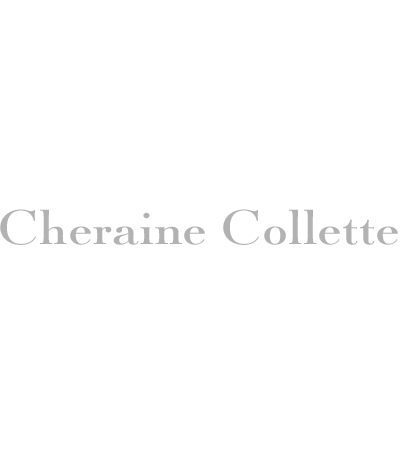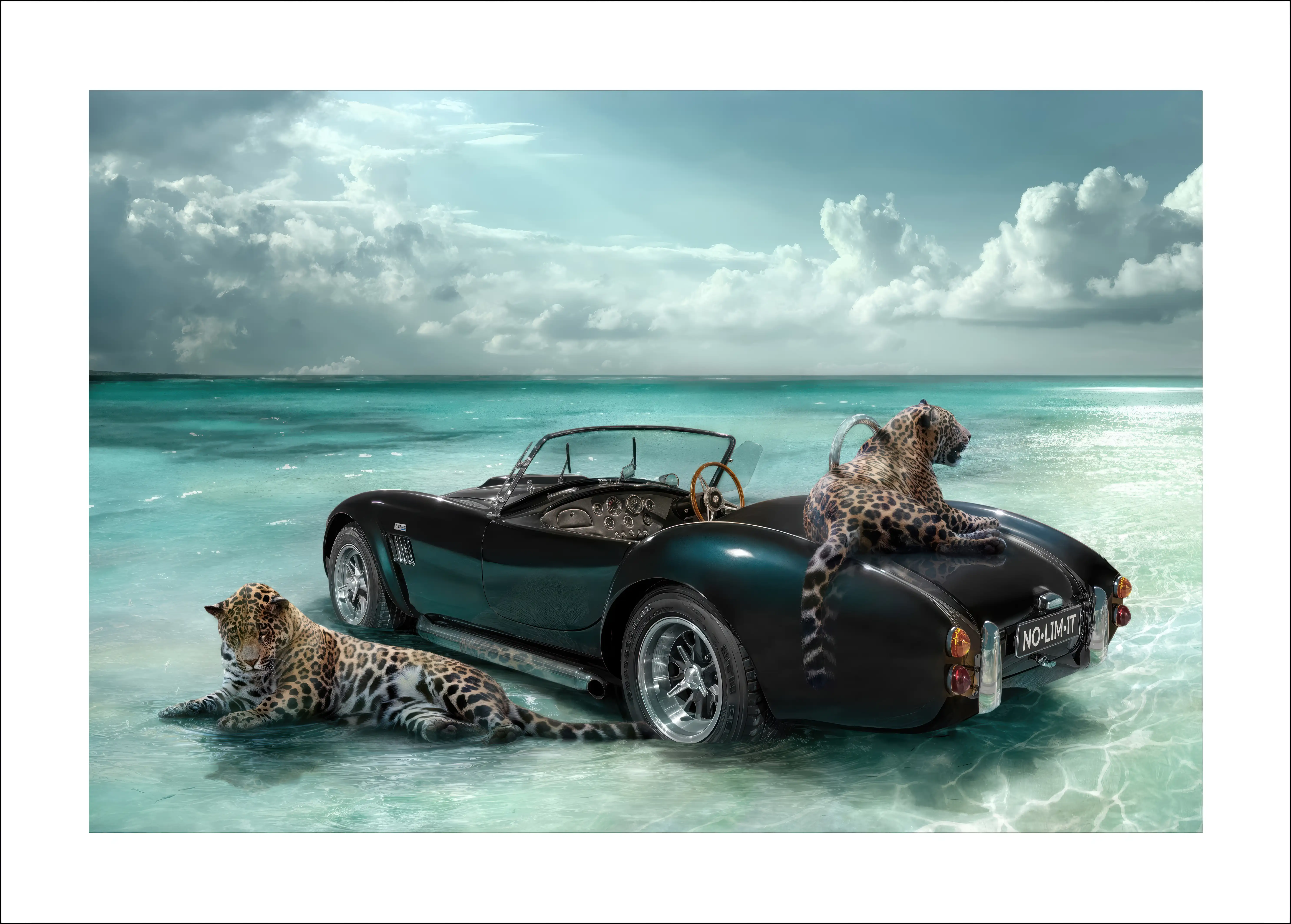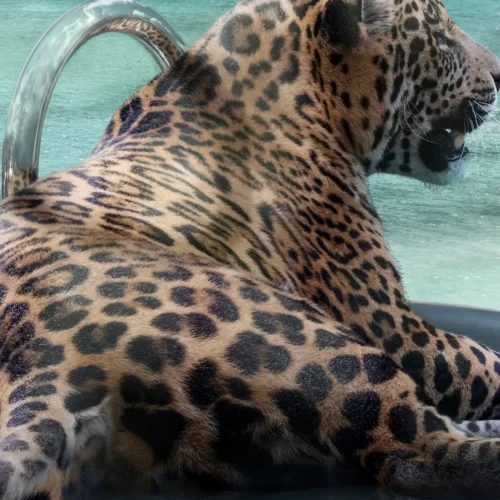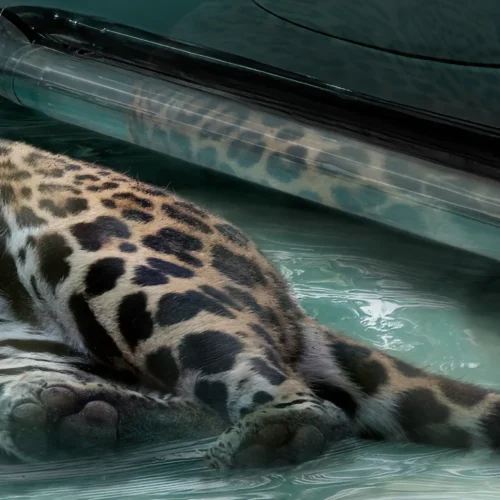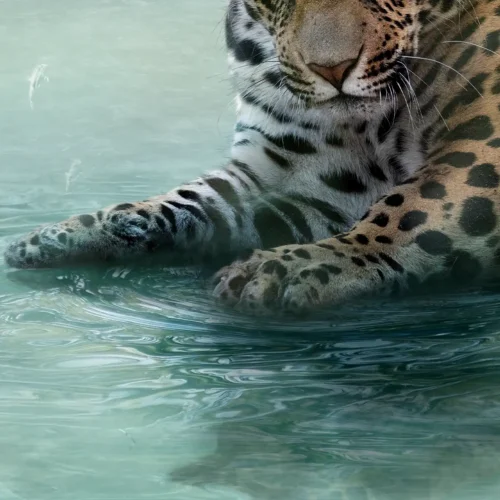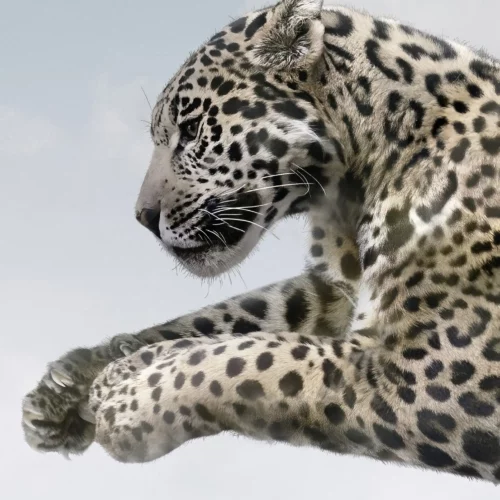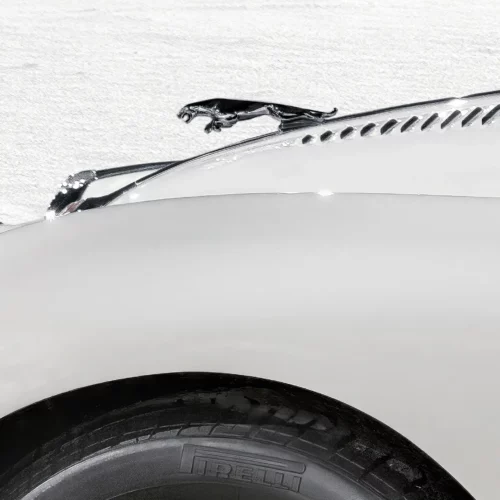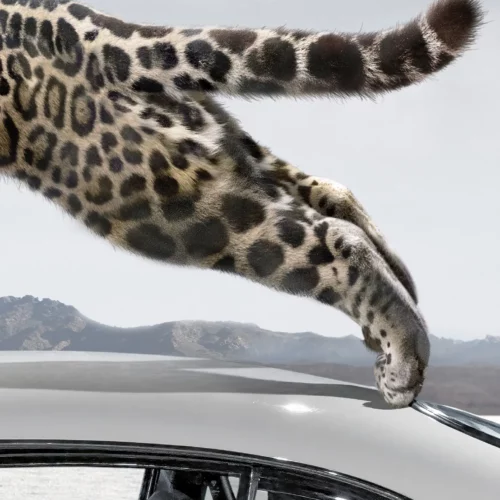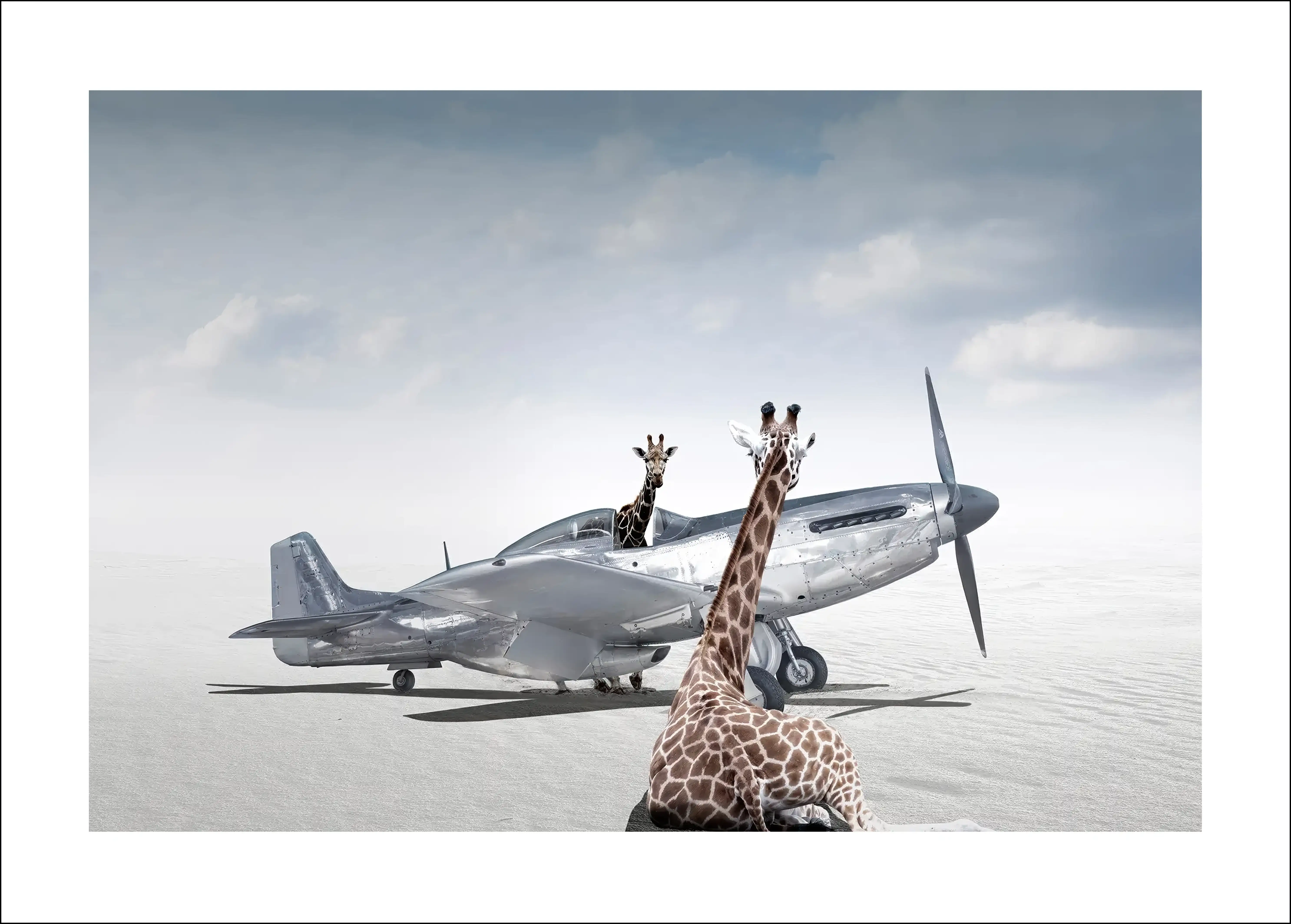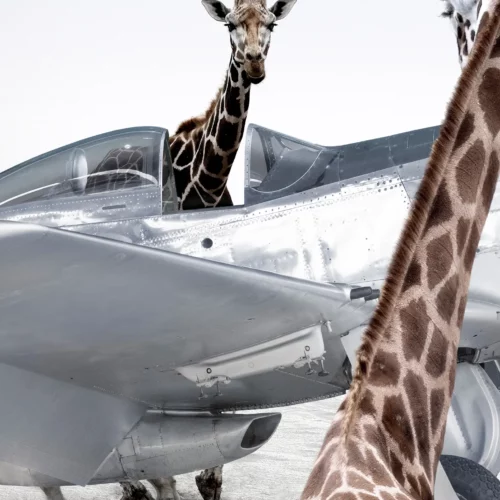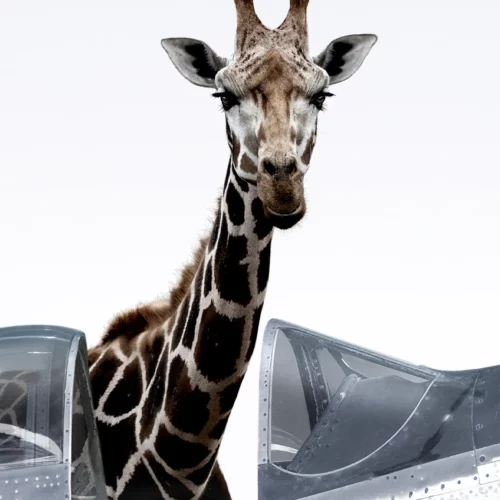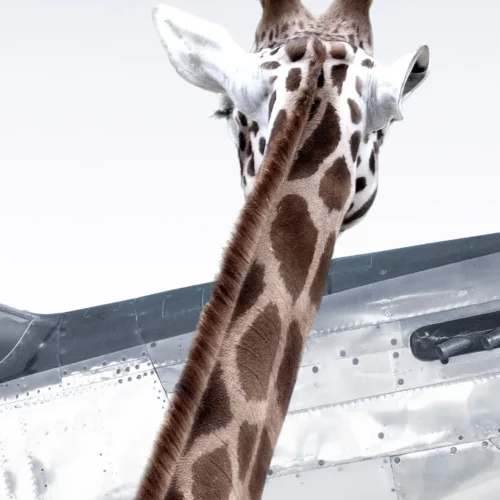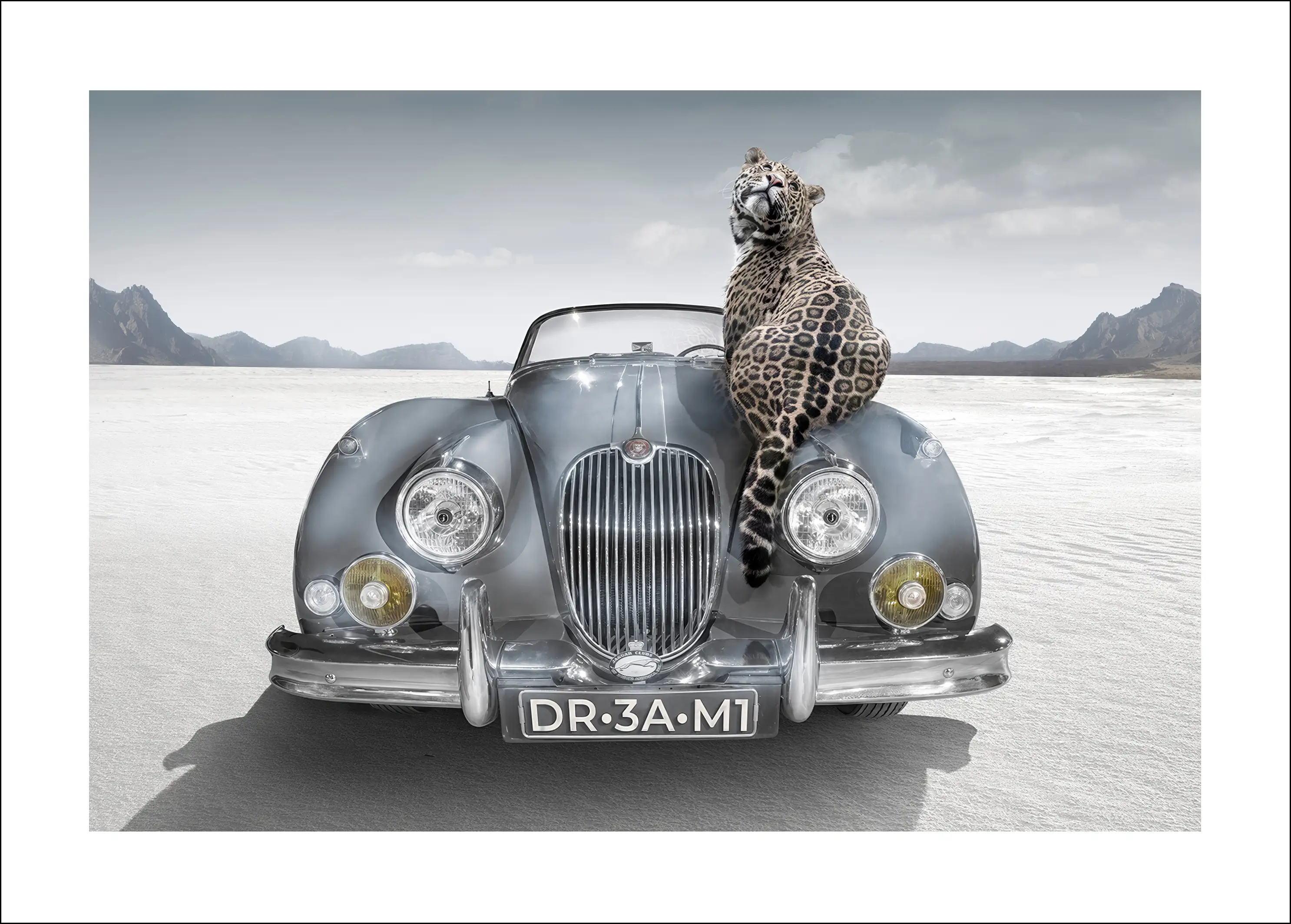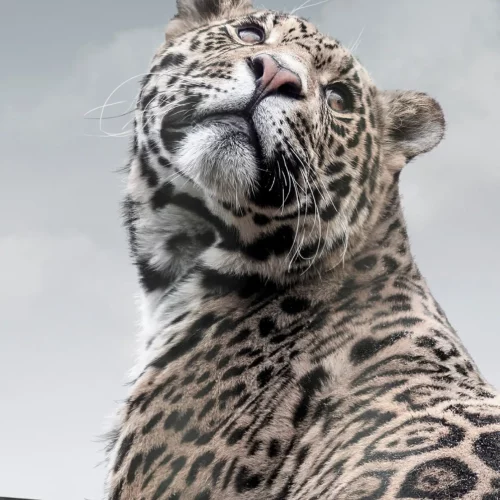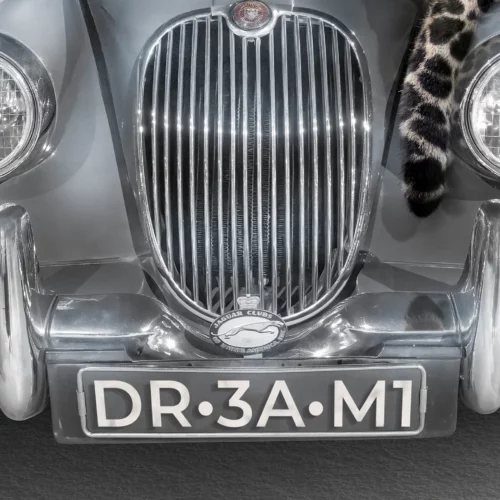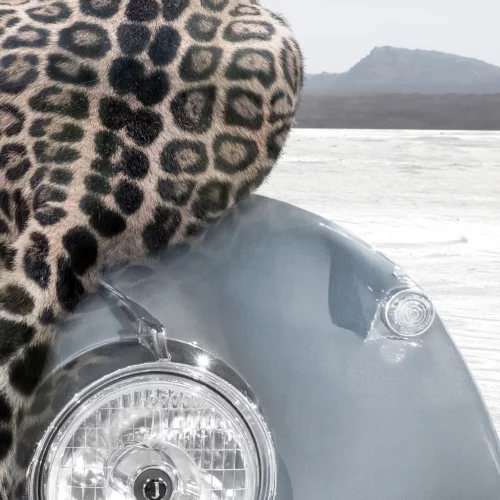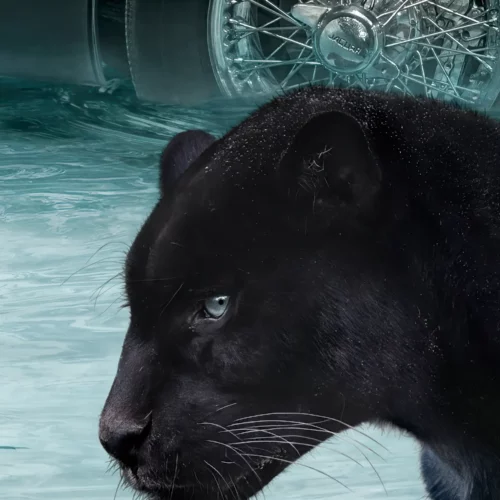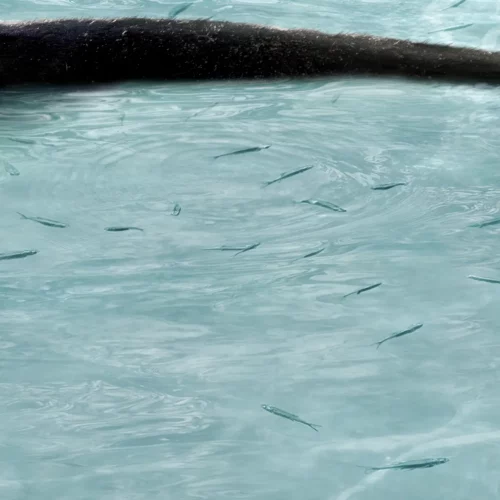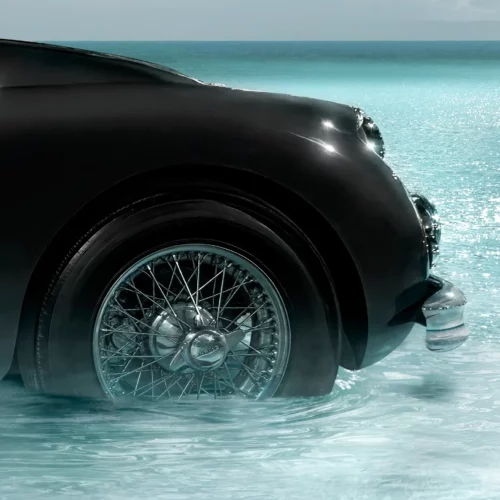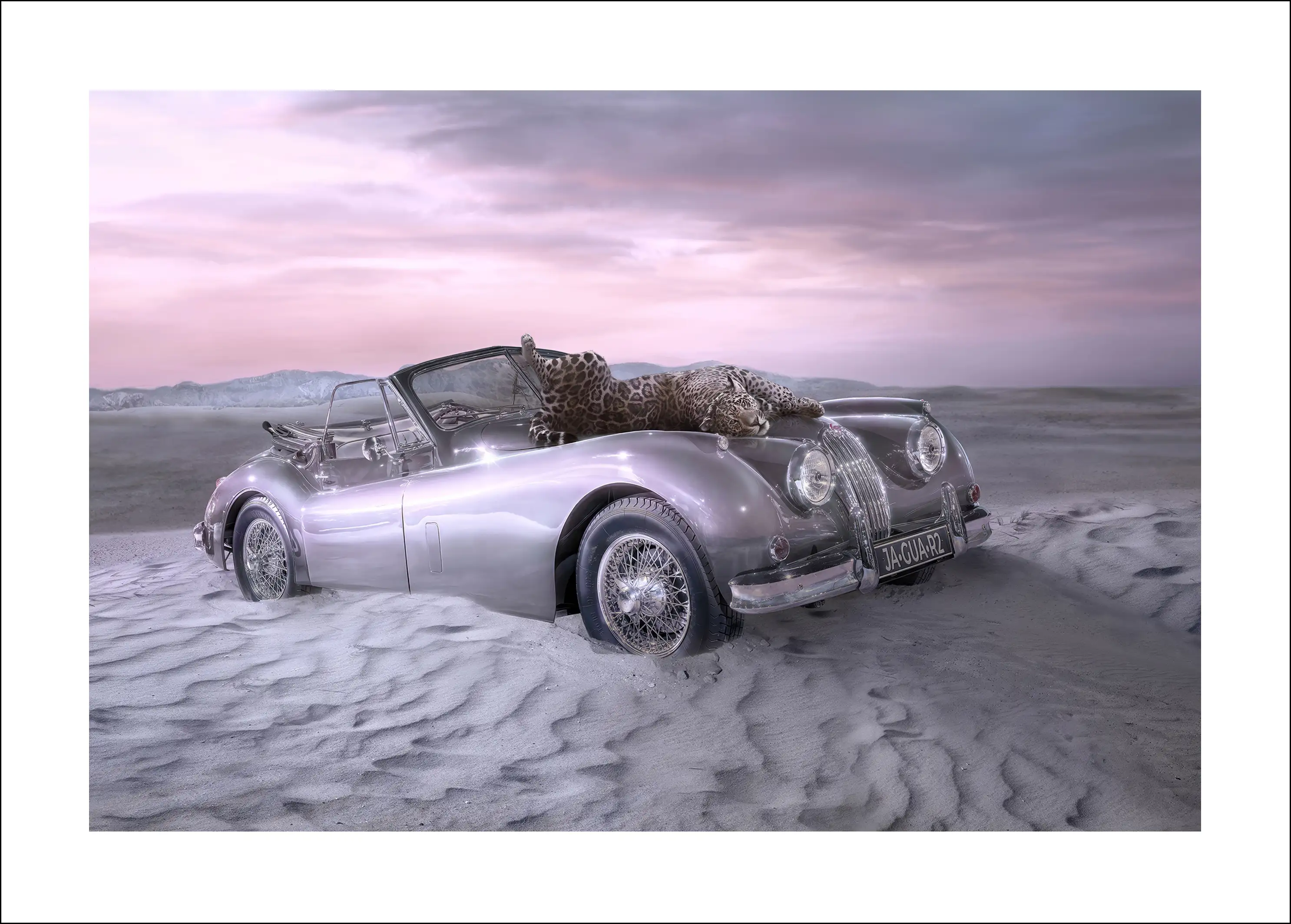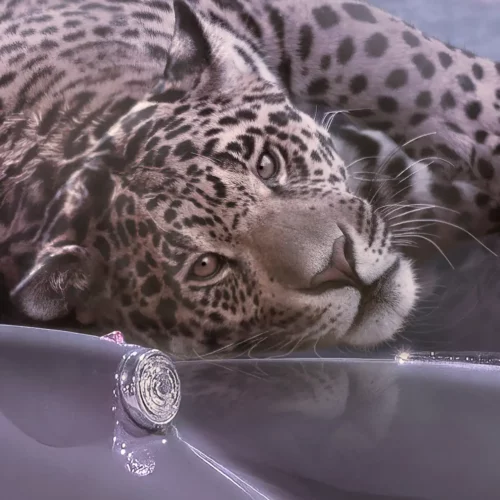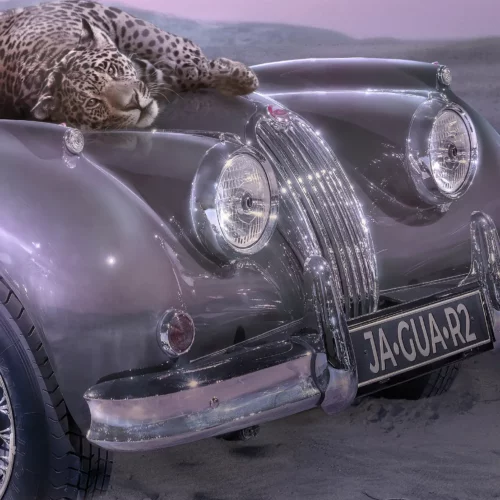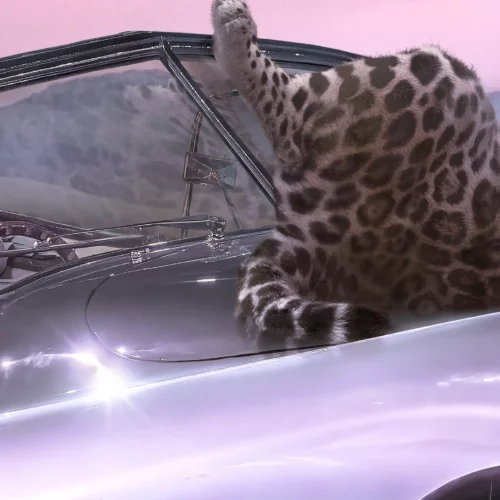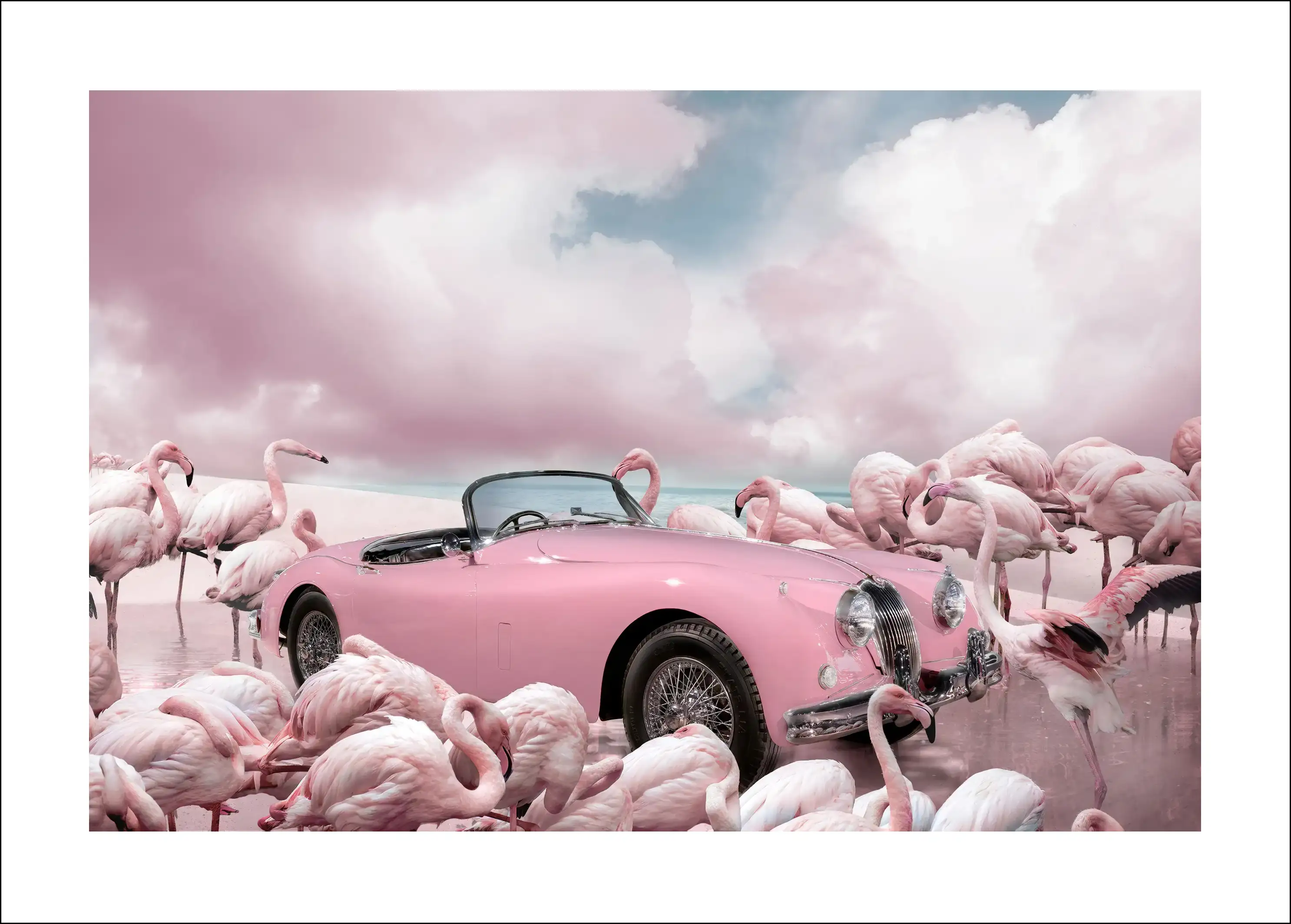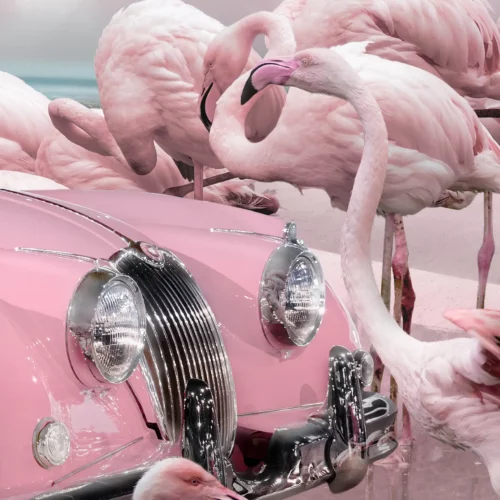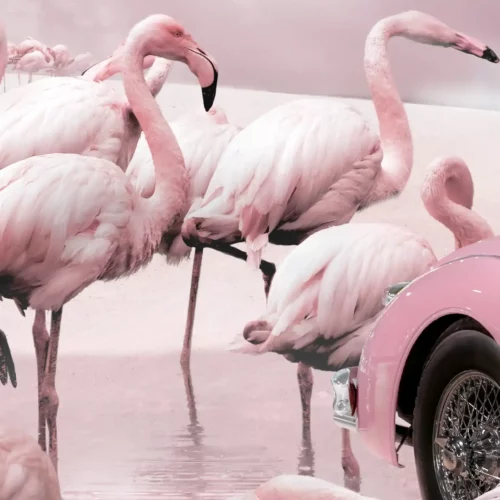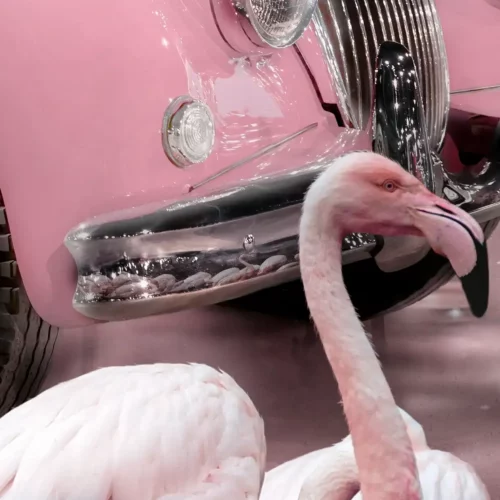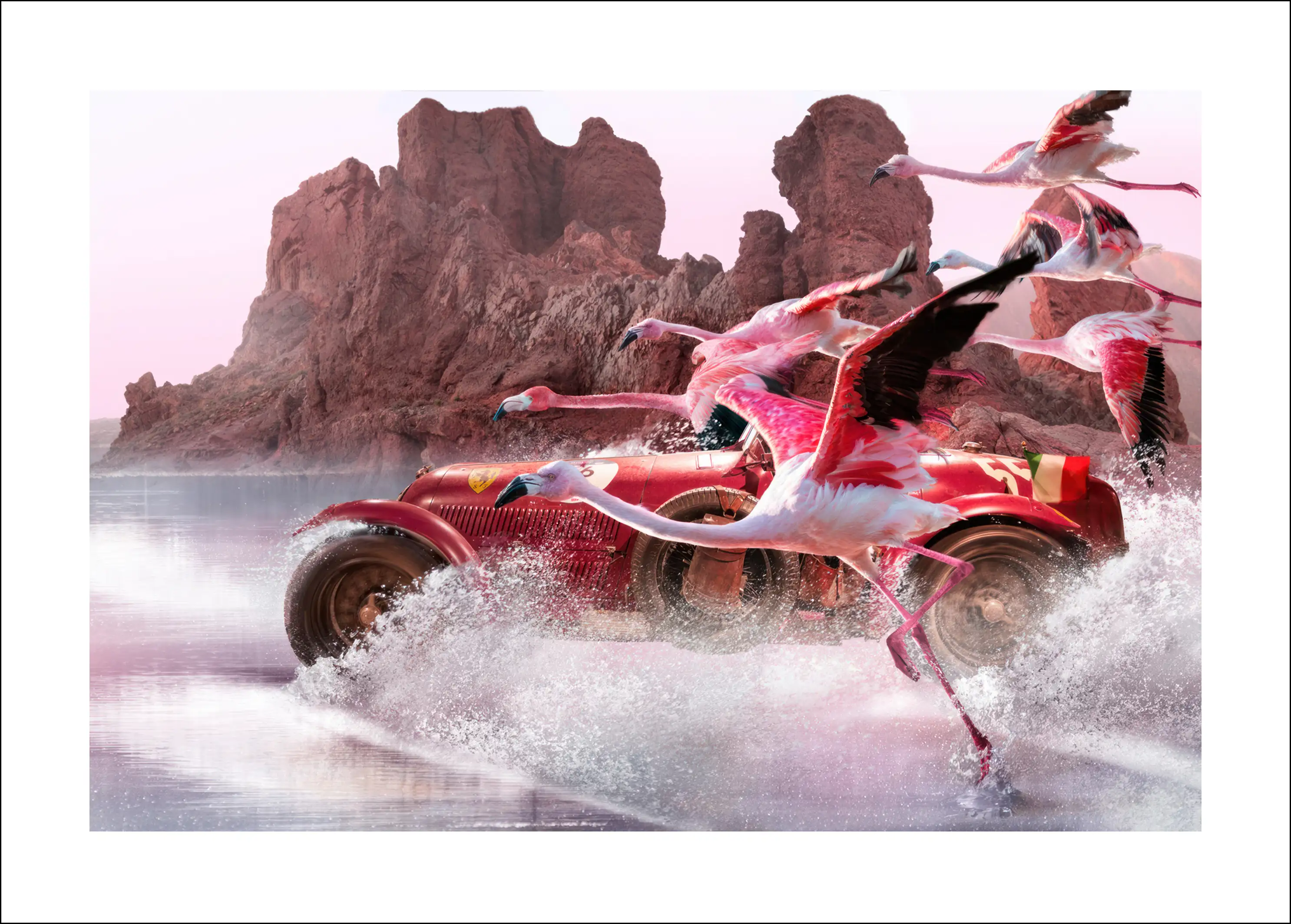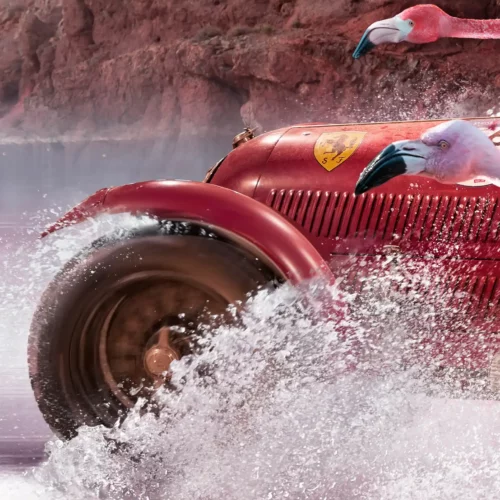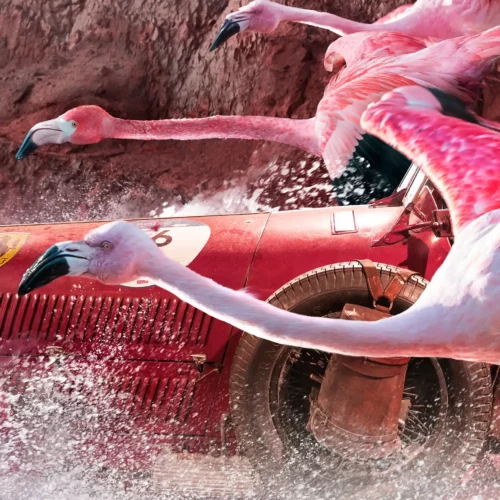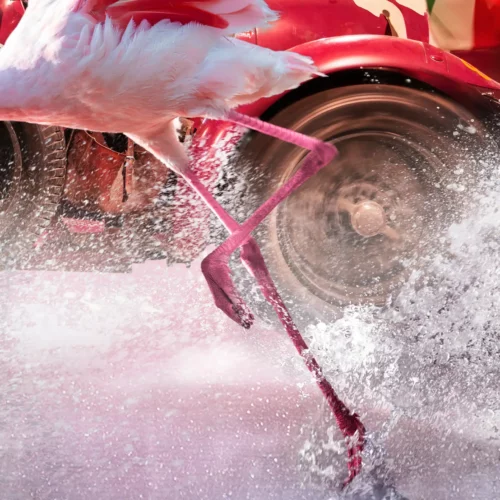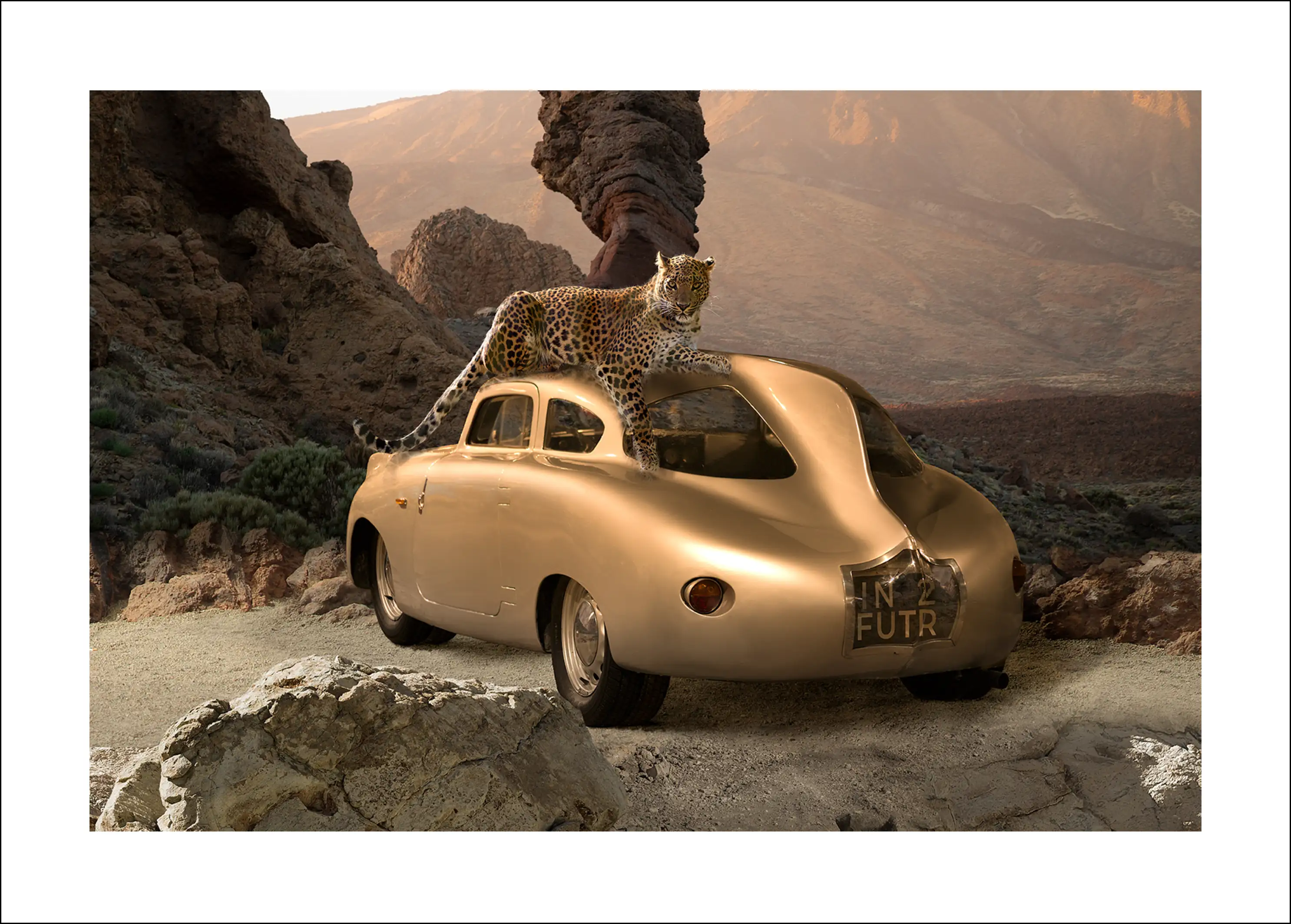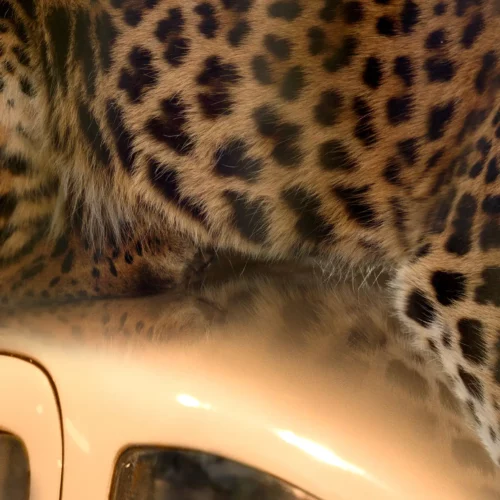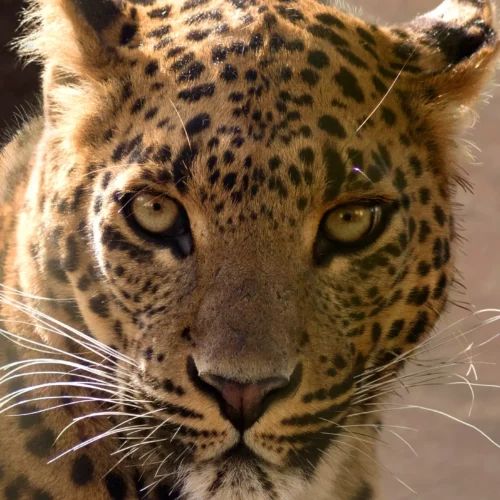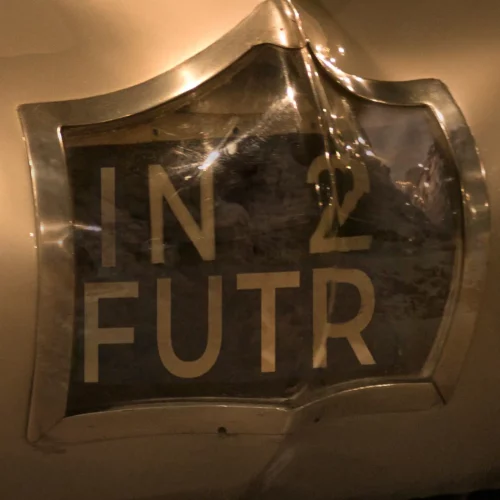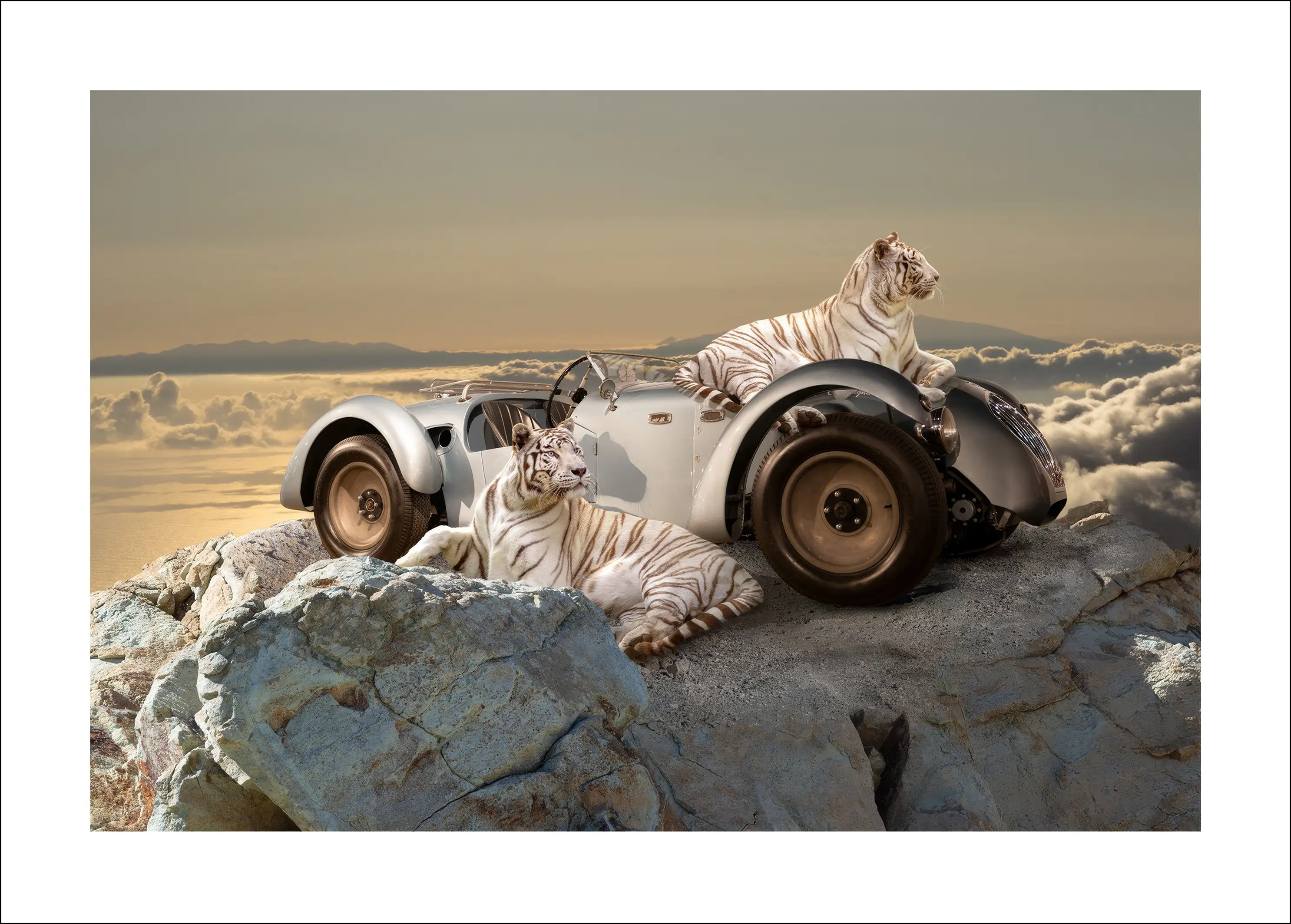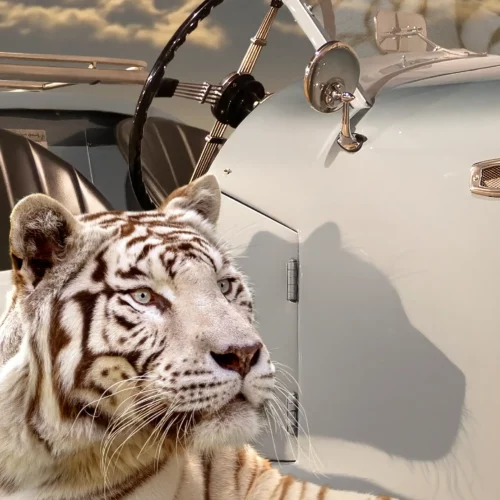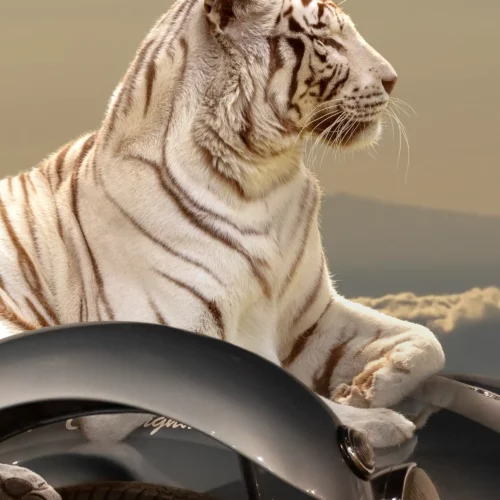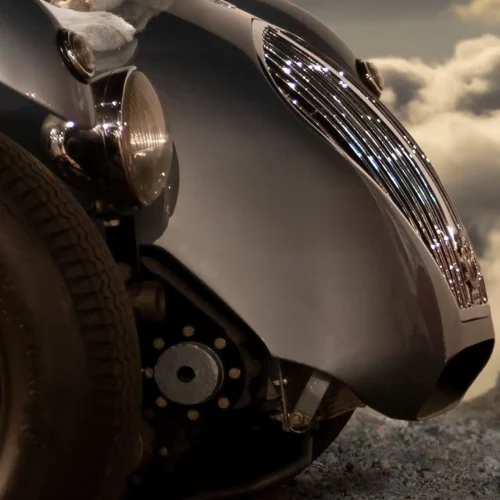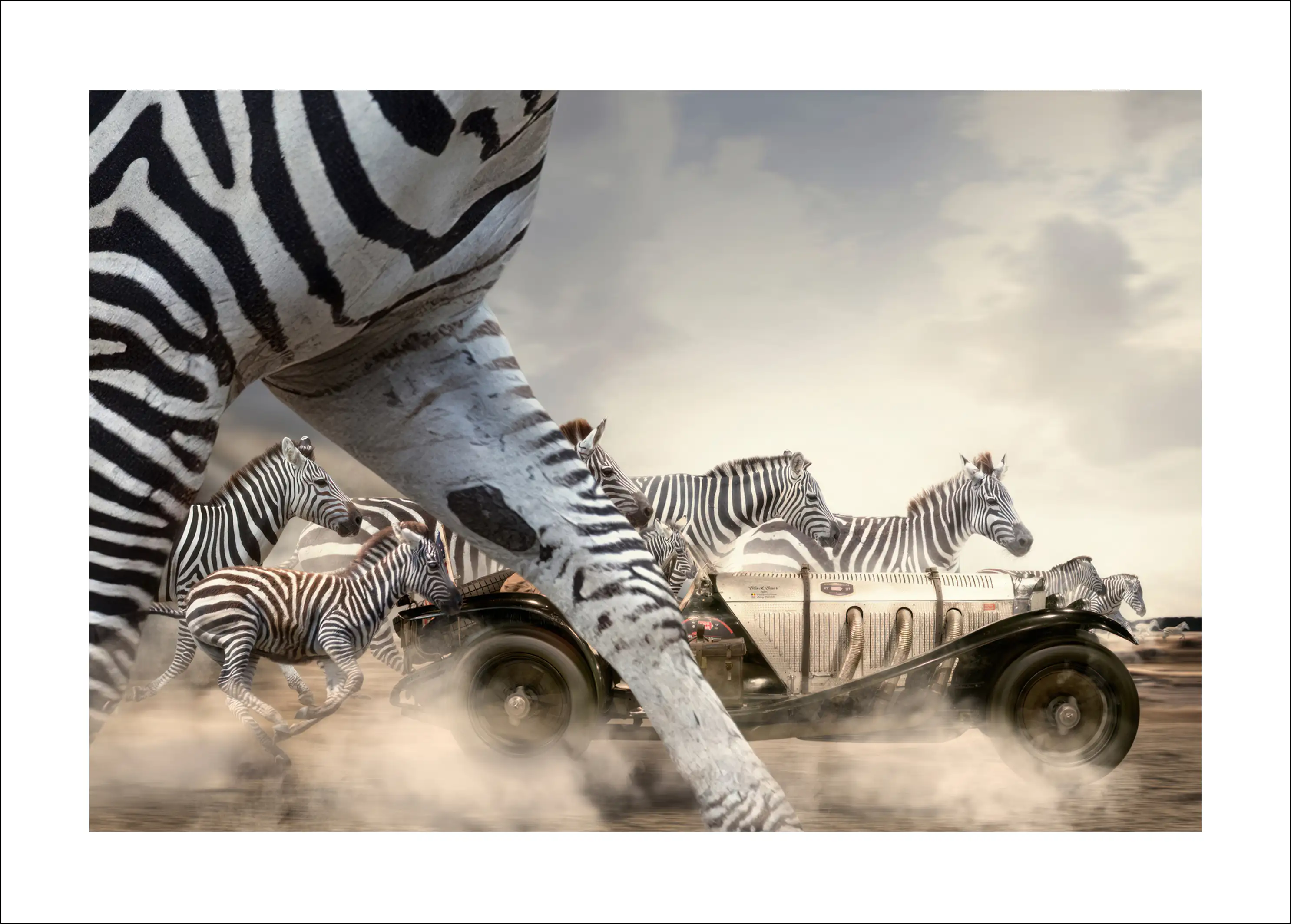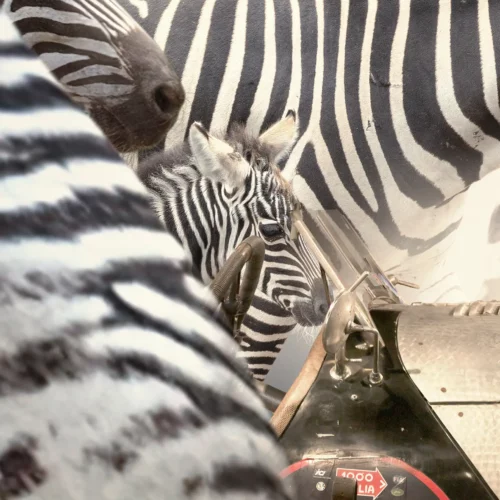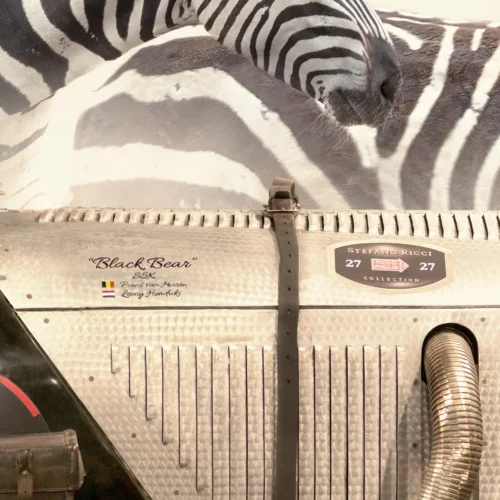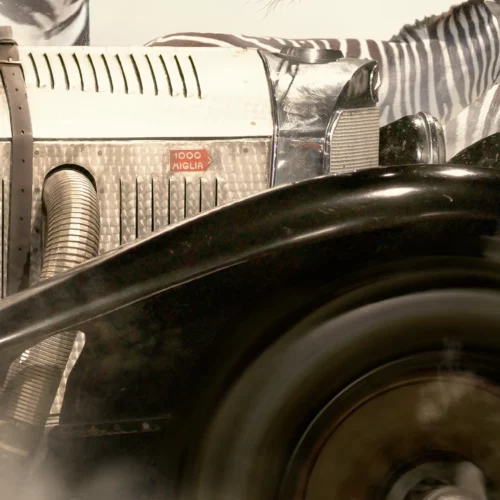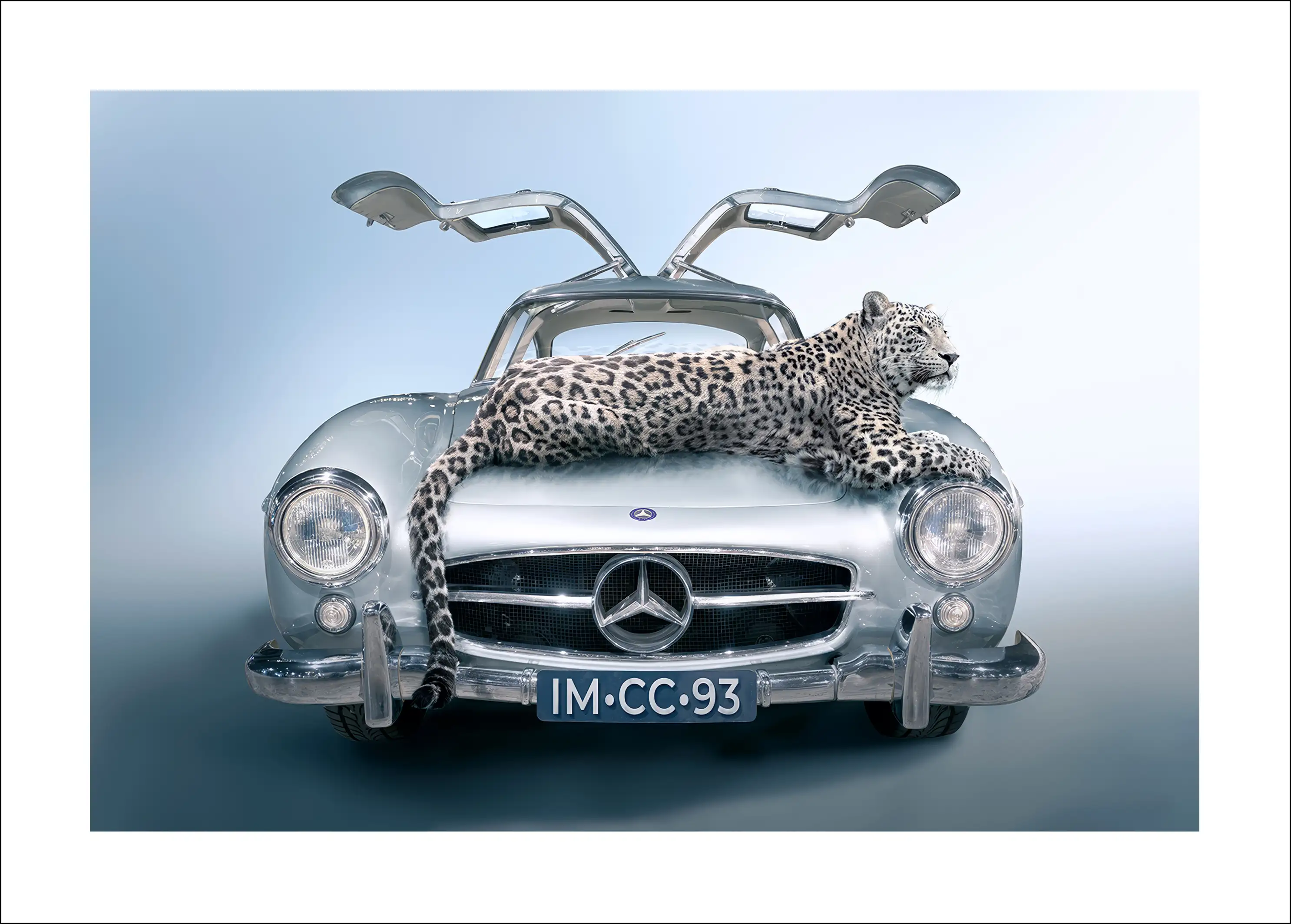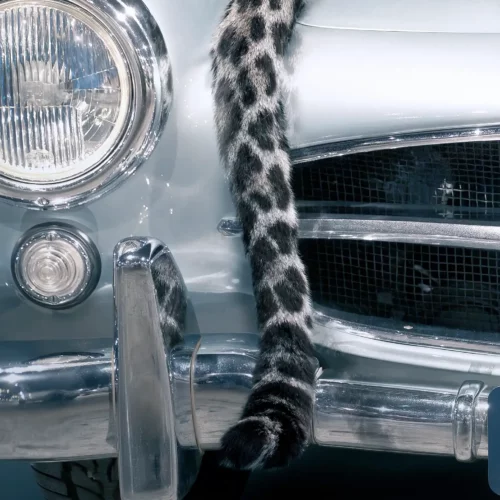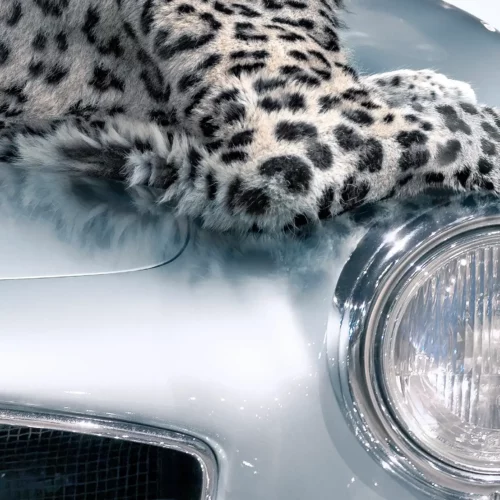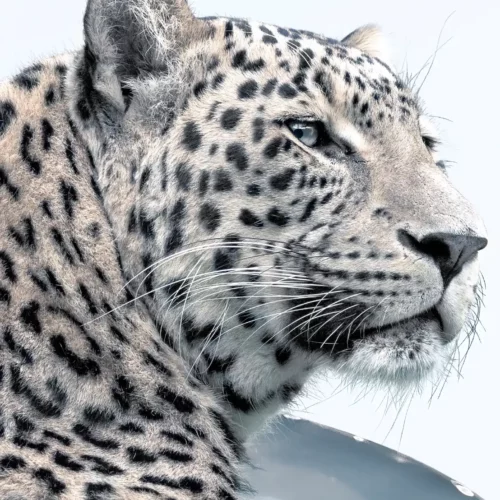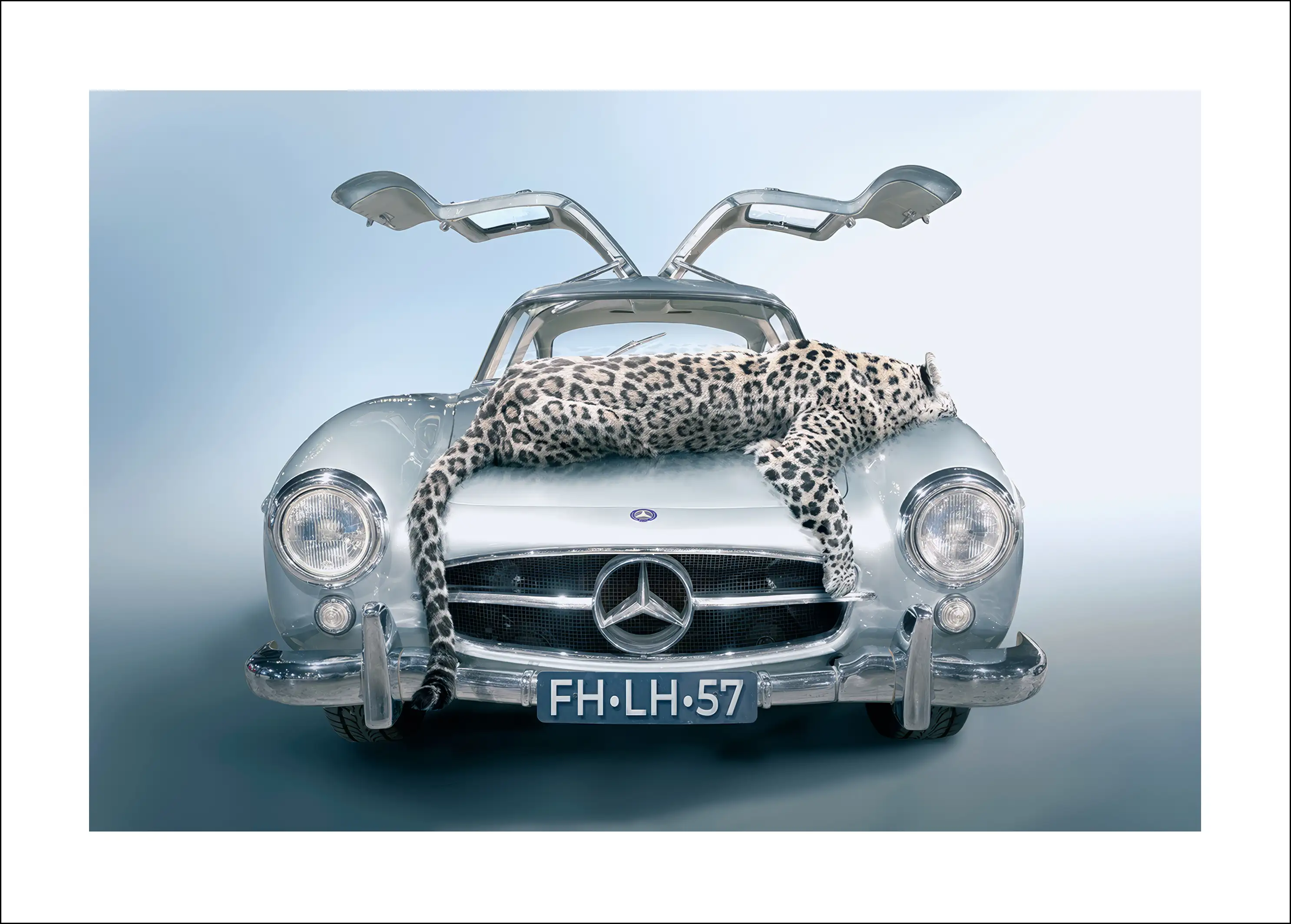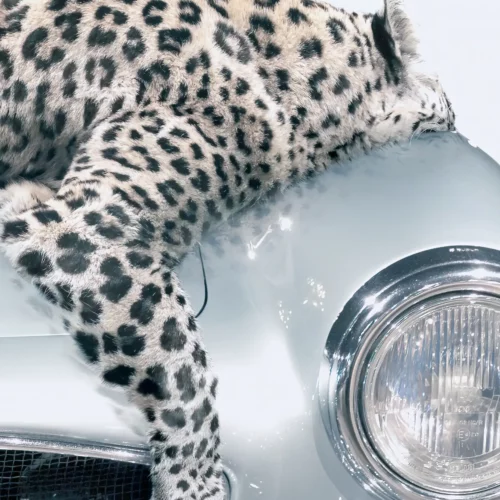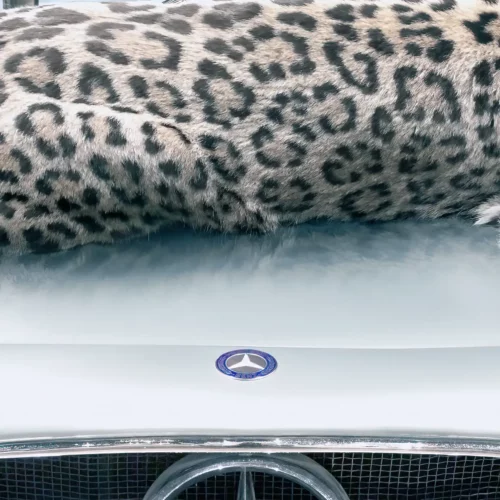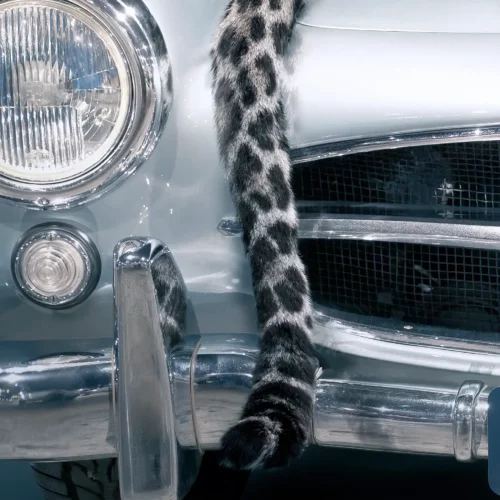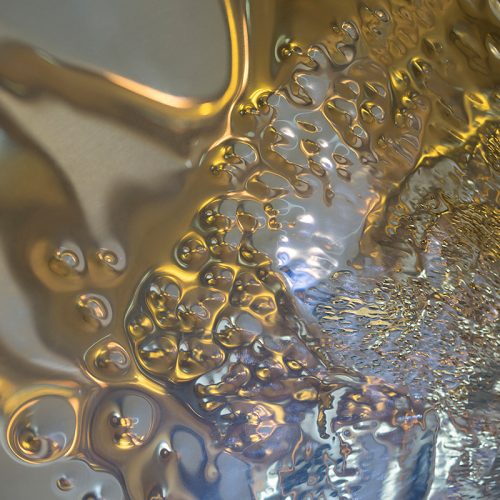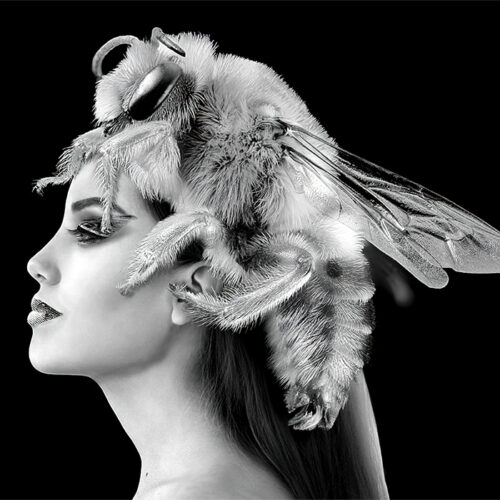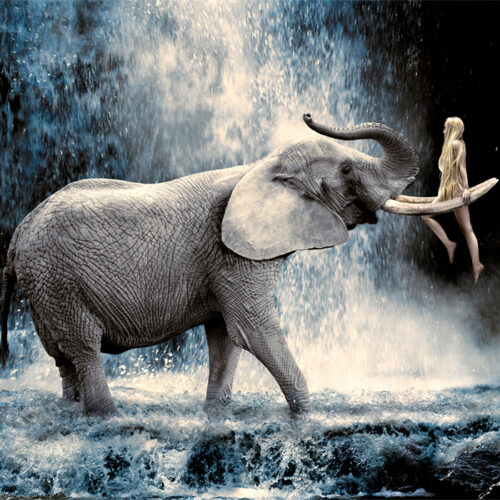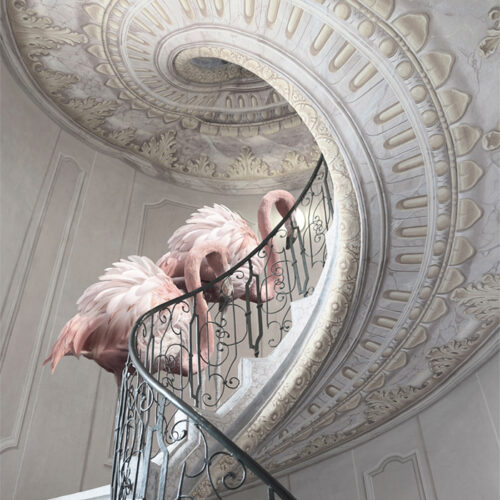LIMITLESS
A Series of International acclaim
Celebrated Worldwide – 1st Place International Photography Awards (IPA), Winner at the Siena Creative International Photo Awards (SIPA), Double Gold at the Prix De La Photographie Paris (PX3), and more
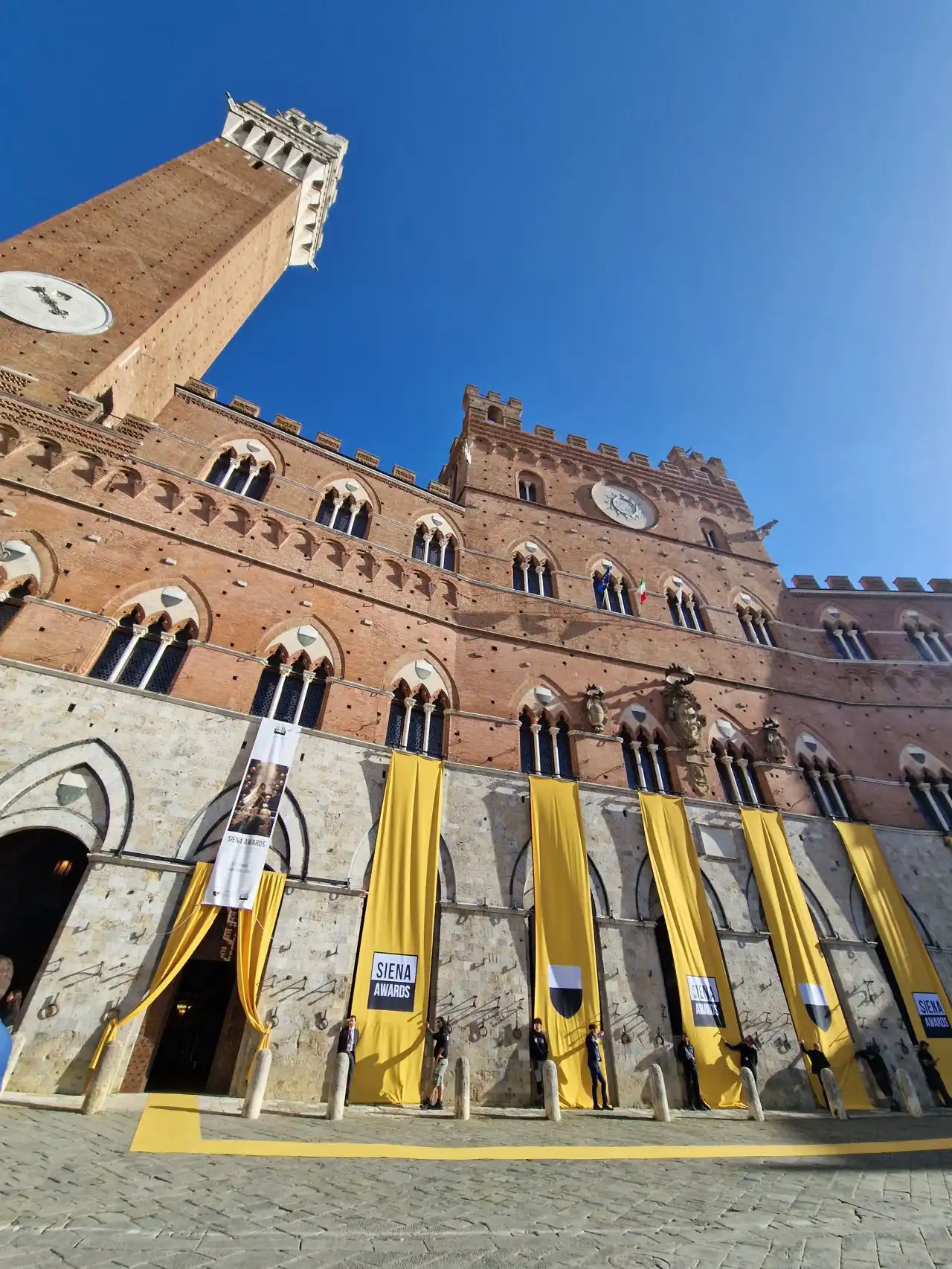

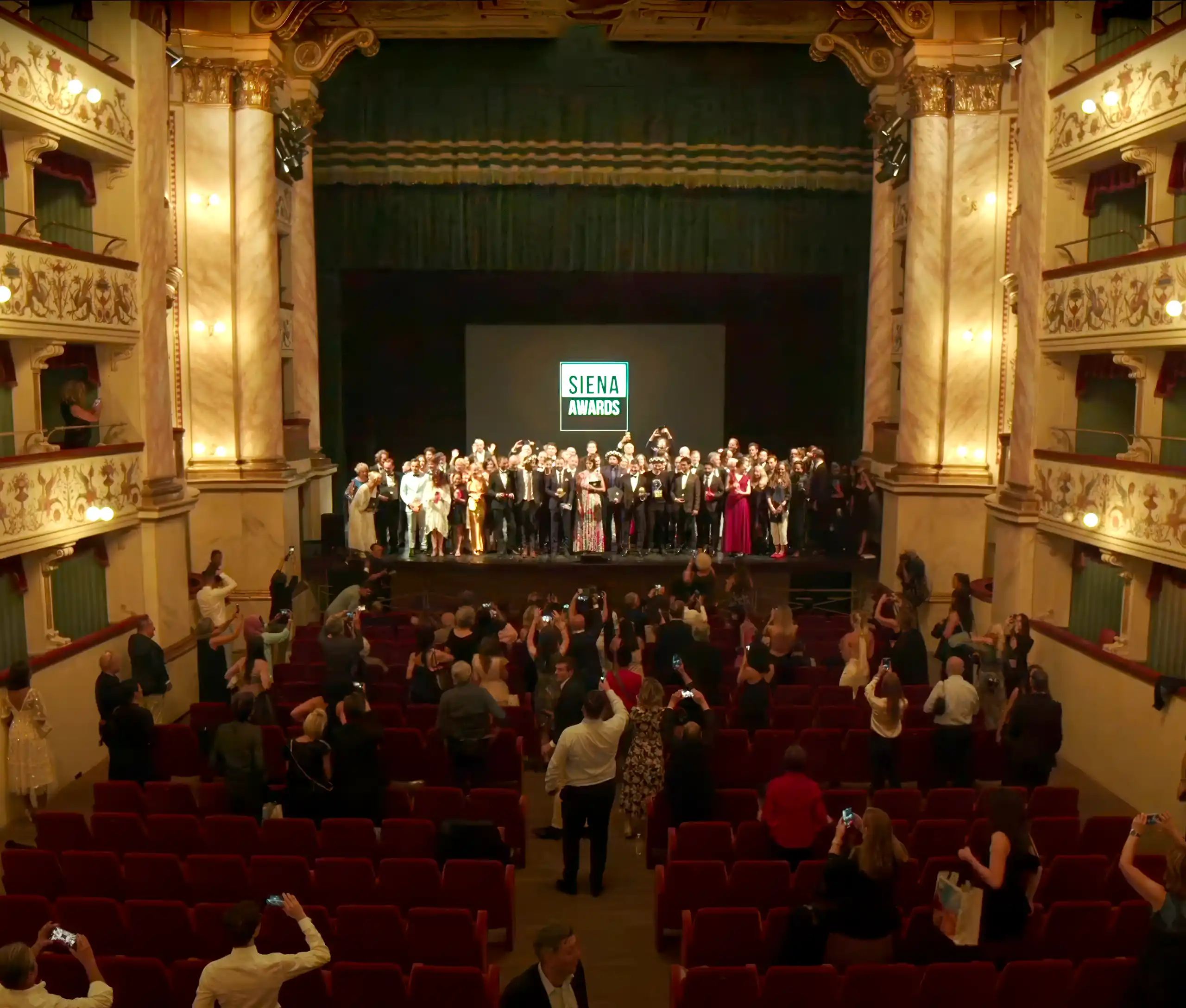
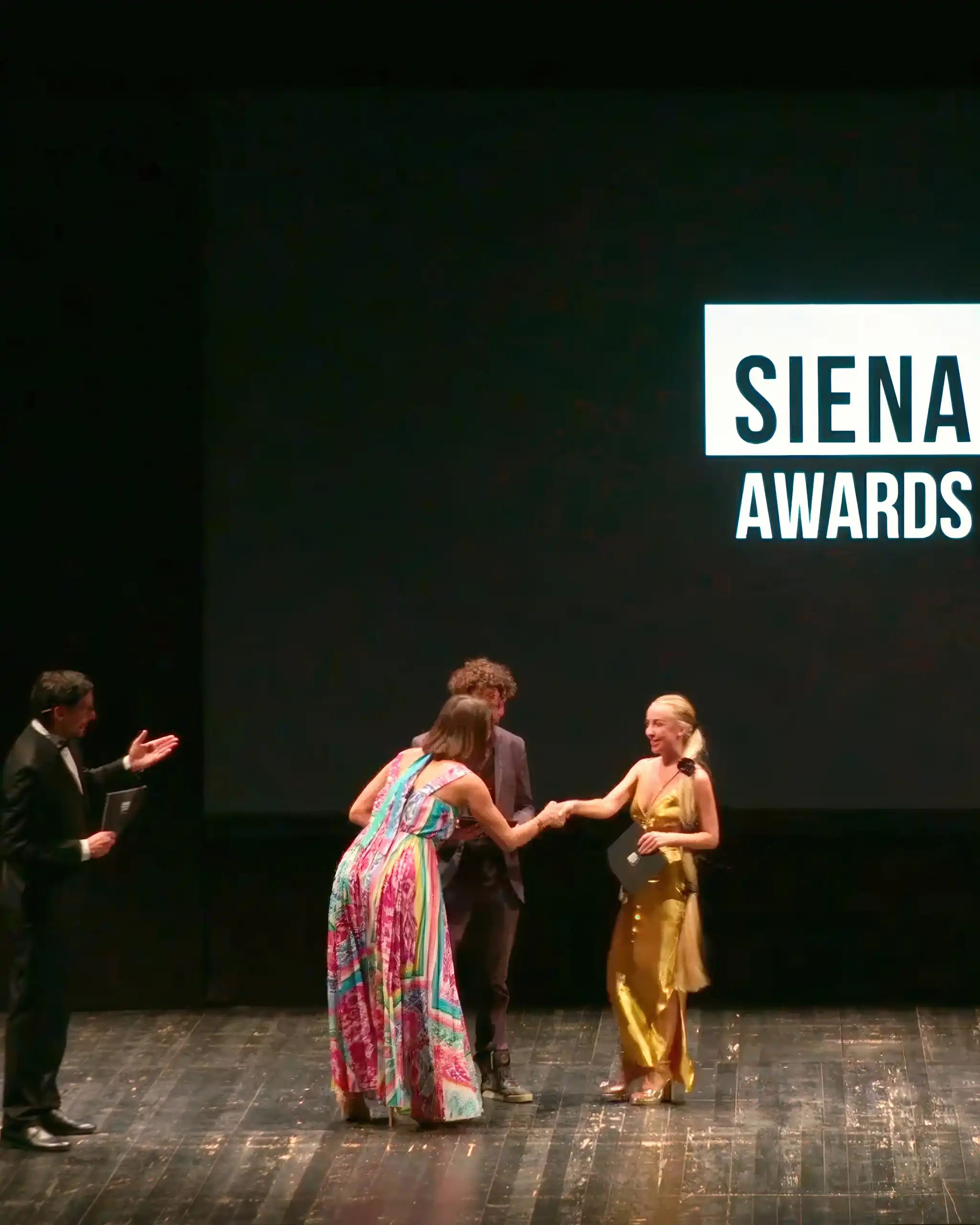


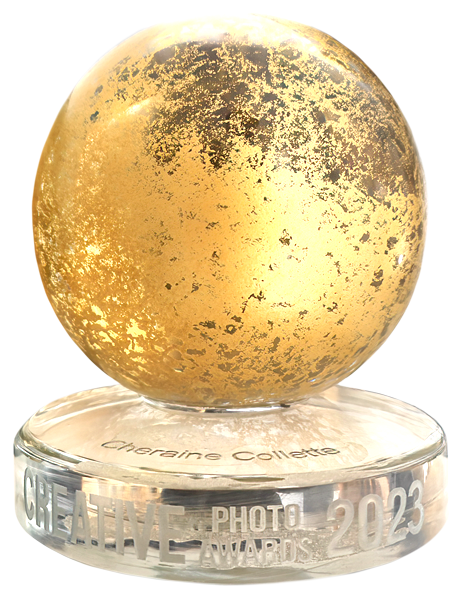






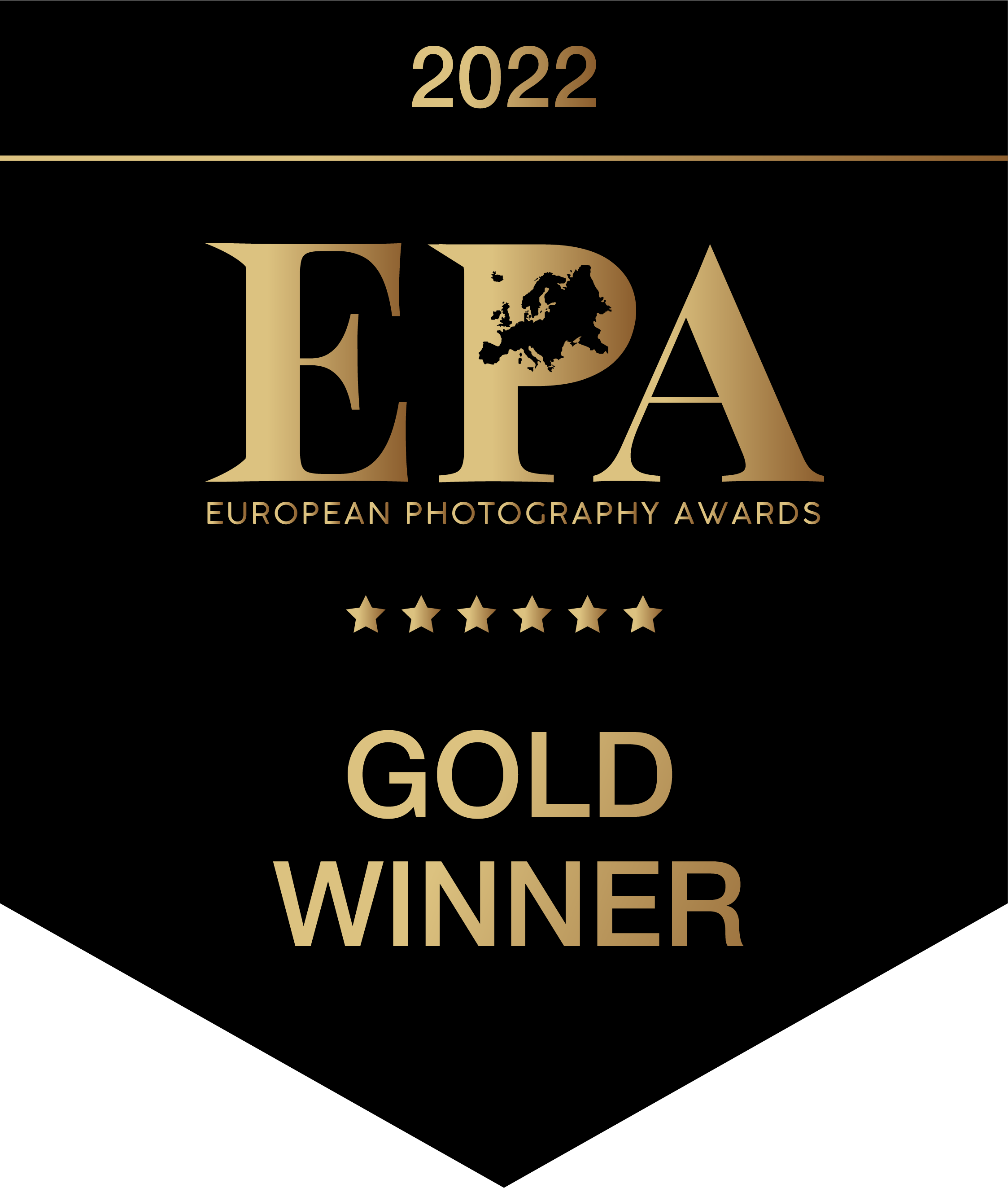
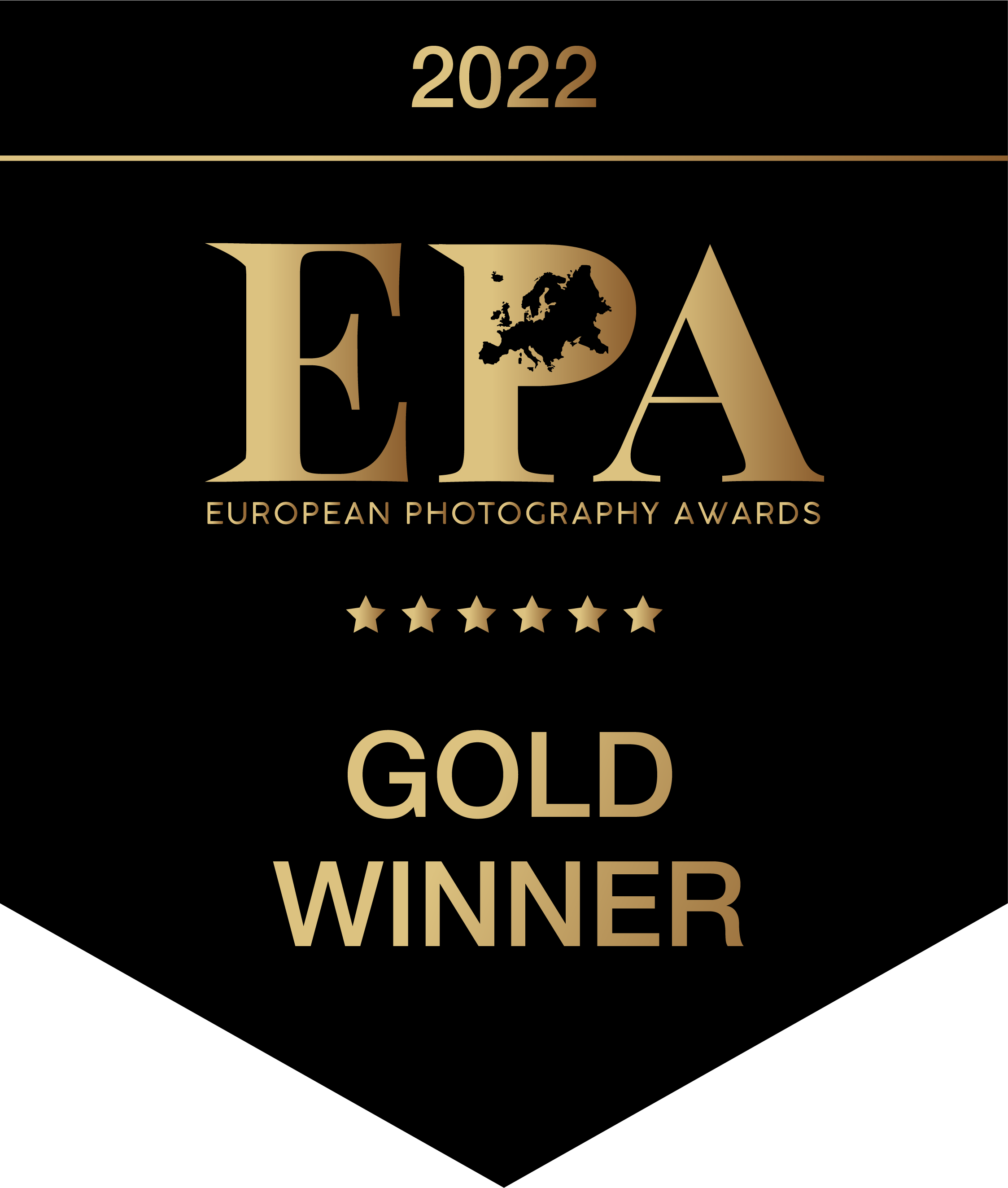
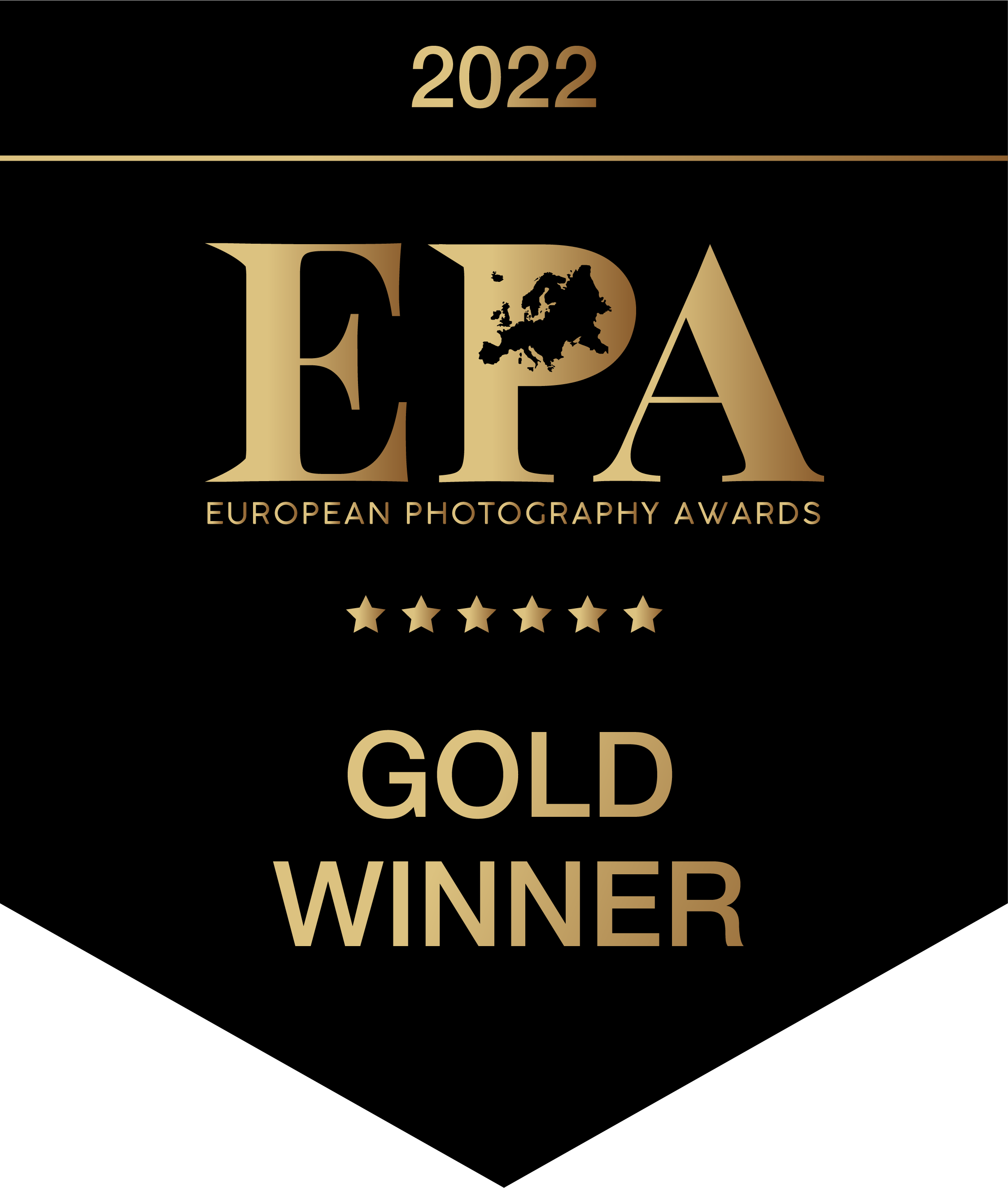
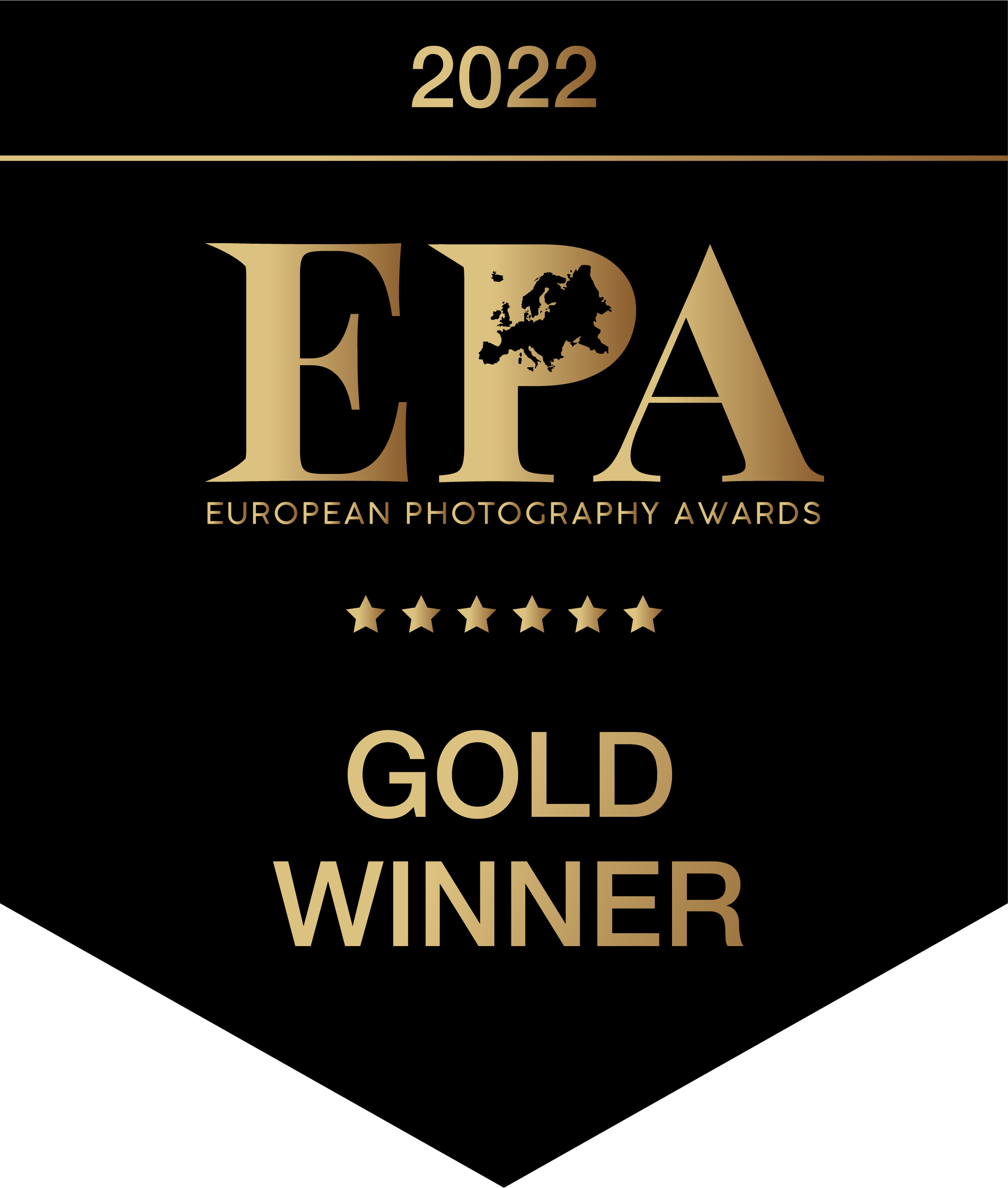
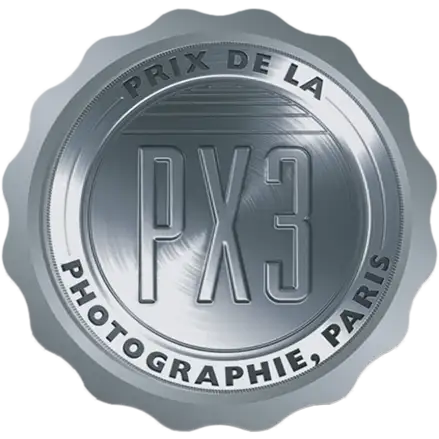
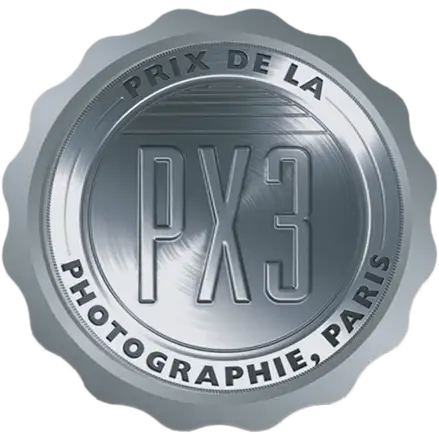
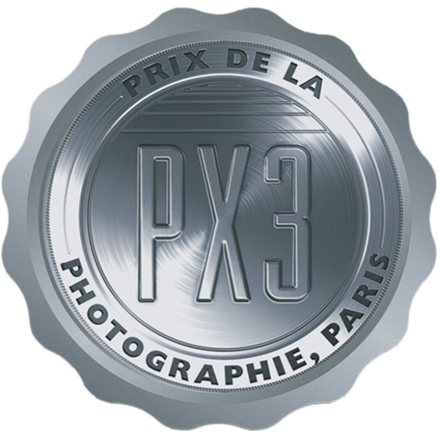
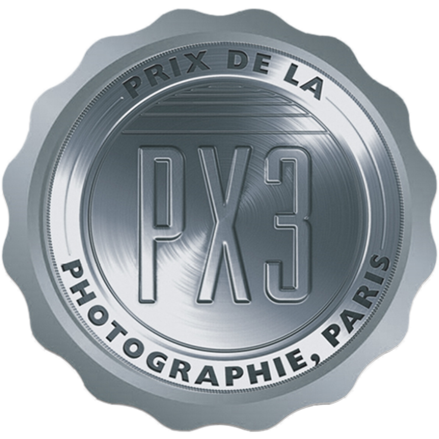
NO LIMIT
2025
The featured car is a AC Shelby Cobra 427
Photographed at Private Museum Collection METROPOLE Druten
DETAILS
ABOUT THE ARTWORK
In ‘No Limit’, the artist presents the legendary AC Shelby Cobra 427, a machine born of British precision and American force, resting in serene turquoise water beneath a sky of soft clouds and boundless horizon.
Originally developed in the 1960s by Carroll Shelby, the Cobra 427 paired a lightweight AC chassis with a roaring 427 cubic inch Ford V8. It quickly became one of the most iconic performance cars in automotive history, celebrated not just for its speed, but for its audacity.
This symbol of motion is now seen at rest. A jaguar lies draped across the rear of the car, another lounges nearby in the shallows.
Their presence is not chance, but deeply symbolic. The jaguar, a creature revered for its strength, stealth, and beauty, mirrors the very qualities that the Cobra embodies. And in naming the car after a snake renowned for its deadly elegance, Shelby’s creation, too, draws directly from the natural world. The Cobra 427, with all its mechanical brilliance, is ultimately a tribute to the wild; to the jaguar’s leap, the predator’s focus, and the dream to go beyond what once seemed possible.
LEAP OF LEGENDS
2024
The featured car is a Jaguar XK150S 3.8 Litre Fastback from 1962 (Winner Le Mans 1951 – 3)
Photographed at Private Museum Collection METROPOLE Druten
ABOUT THE ARTWORK
In this artwork, the artist captures the essence of the legendary 1962 Jaguar XK150S 3.8 litre fastback, known as the 'Hartin Fastback', against a stunning backdrop of vast white salt flats, photographed in Tenerife but reminiscent of the surreal landscapes of Death Valley, echoing the pristine white of the car.
The scene is brought to life by the powerful image of a jaguar (Panthera onca) leaping from the back of the Jaguar car. The silhouette of the big cat mirrors the iconic emblem on the car's bonnet, creating a striking visual link between the machine and its namesake. This moment of dynamic tension and grace symbolises the raw power and agility that both car and animal represent.
Originally a fixed-head coupé, this particular Jaguar XK150S was transformed into a fastback through the visionary efforts of its first owner, Eric Richardson, who sought to enhance the car's practicality without compromising its elegance. With bespoke aluminium panels and performance upgrades, the car has become a unique blend of style and speed, much like the Jaguar it shares its name with.
The salt flats, stretching endlessly towards distant mountains, reinforce the sense of freedom and boundless potential that this vehicle embodies. As well as paying homage to the XK150S's storied history, including its links to Le Mans victories, the artwork reflects on the symbiotic relationship between human innovation and the natural world.
The artist's composition underscores the idea that the spirit of adventure and excellence transcends both the natural and the mechanical realms, urging us to appreciate and preserve the beauty and heritage of both.
DREAMING OF HEIGHTS
2024
The featured plane is a P-51 Mustang fighter plane from 1945
Photographed at the National Military Museum of the Netherlands
ABOUT THE ARTWORK
In this artwork, the artist reimagines the iconic P-51 Mustang fighter plane from 1945 and contrasts it with the towering elegance of a giraffe, creating a surreal scene that fuses the mechanical with the natural. Photographed at the National Military Museum of the Netherlands, the composition is both whimsical and thought-provoking as the giraffe, positioned behind the plane, appears to be at the controls, embodying a sense of adventure and curiosity.
Another giraffe stands in the center-right of the frame, its gaze fixed on the scene, almost as if contemplating the relationship between these two symbols of power and grace. The setting is a vast expanse of white sand under an endless horizon and clear blue sky, evoking a sense of limitless possibilities.
This artwork not only highlights the contrast between the natural and mechanical worlds, but also invites reflection on the harmony and tension between them. It serves as a reminder of the beauty of our natural heritage and the importance of preserving it, just as we honour and remember our technological and historical achievements. The P-51 Mustang, celebrated for its pivotal role in aviation history, finds a new context here, symbolising the exploration of new frontiers - both in the skies and in the imagination.
DREAM DREAM DREAM
2024
The featured car is a Jaguar XK150S 3.4 Litre Roadster 1958 (Winner Le Mans 1951 – 3)
Photographed at Private Museum Collection METROPOLE Druten
ABOUT THE ARTWORK
In this artwork, Collette reimagines the Jaguar XK150S Roadster in a silvery blue hue, reminiscent of the boundless sky, echoing an air of serene majesty and elegance of the jaguar (Panthera Onca), a creature as elusive and majestic as the car itself. Together reimagined in a landscape that melds the rugged beauty of Tenerife with the stark, mesmerizing, and ethereal expanse of salt flats.
Drawing parallels between the value of our mechanical and natural heritages, to underscore the importance of safeguarding our planet’s biodiversity for future generations to marvel at and draw inspiration from.
The 1958 Jaguar XK150S 3.4 Litre Roadster, an icon of automotive excellence, is celebrated for its illustrious racing heritage, particularly the Le Mans victories from 1951 to 1953.
Enhanced for superior performance, its upgraded 3.4-litre power unit propelled it to new heights of achievement, solidifying its legend on both the road and the racetrack.
GOOD VIBRATIONS
2024
The featured car is a Jaguar XK150S 3.4 Litre Roadster 1958 (Winner Le Mans 1951 – 3)
Photographed at Private Museum Collection METROPOLE Druten
ABOUT THE ARTWORK
In this artwork, Collette reimagines the Jaguar XK150S Roadster in deep, lustrous black, echoing the elegance of the rare black jaguar (Panthera Onca), a creature as elusive and majestic as the car itself. This artwork not only celebrates the beauty and heritage of these icons but also serves as a reminder of our responsibility to preserve the natural habitats that nurture such rare and magnificent creatures.
Drawing parallels between the value of our mechanical and natural heritages, to underscore the importance of safeguarding our planet’s biodiversity for future generations to marvel at and draw inspiration from.
The 1958 Jaguar XK150S 3.4 Litre Roadster, an icon of automotive excellence, is celebrated for its illustrious racing heritage, particularly the Le Mans victories from 1951 to 1953.
Enhanced for superior performance, its upgraded 3.4-litre power unit propelled it to new heights of achievement, solidifying its legend on both the road and the racetrack.
TIMELESS TEMPTATION
2024
The featured car is a Jaguar XK140 cabrio 1955 (Winner Le Mans 1951 – 3)
Photographed at Private Museum Collection METROPOLE Druten
DETAILS
ABOUT THE ARTWORK
Accompanying this iconic vehicle is the Jaguar (Panthera Onca), the largest cat in the Americas and the world’s third-largest feline. The jaguar’s strength, agility, and mystique have influenced human culture for centuries, symbolizing power, and grace, revered by the Maya as a spiritual companion and protector.
This pairing in the artwork reflects a deep respect for the natural world and a nod to the car’s namesake, emphasizing the interconnectedness of human ingenuity and nature’s beauty.
The 1955 Jaguar XK140 Cabrio. A rare engineering masterpiece, whose production was limited to a few thousand units, with each one a cherished relic of the golden age of automotive design.
Its 3.4-liter engine, a marvel of its time, enabled the XK140 to achieve remarkable performance figures, including a top speed of over 120 mph and the ability to accelerate from 0 to 60 mph in less than 10 seconds. Such feats were extraordinary in the 1950s, propelling the XK140 beyond its peers and into the history books of automotive legend.
CALIFORNIA DREAMING
2022
The featured car is a Jaguar xk150 Cabrio 1958
Photographed at Private Museum Collection METROPOLE Druten
DETAILS
ABOUT THE ARTWORK
For this artwork, Collette reimagined this timeless classic in a striking flamingo pink color, that accentuates its graceful curves and iconic design and reflects the car’s vibrant spirit and the flamboyance of the era it represents, positioned amidst a flock of pink flamingos, this artwork symbolizes a harmonious blend of nature’s elegance and human ingenuity.
The 1958 Jaguar XK150 Cabriolet 1958, a marvel of its time, with its sleek lines and powerful presence, marked the culmination of Jaguar’s XK series, offering a blend of sophistication and speed that was unparalleled at the time.
Its 3.4-liter engine achieving 0 to 60 mph in under 10 seconds, a remarkable feat for its period and affirmed Jaguar’s reputation for producing some of the fastest cars in the world. A pioneer in safety and performance, the XK150 was the first to introduce standard disc brakes, setting a new benchmark in automotive innovation.
uNCHARTED dRIVE
2022
The featured car is an Alfa Romeo 8C 2900A
Photographed at Private Museum Collection METROPOLE Druten
DETAILS
ABOUT THE ARTWORK
In this artwork, ‘La Bella Rossa’ is reimagined in a landscape that melds the rugged beauty of Tenerife with the stark, mesmerizing, and ethereal expanse of salt flats.
The American flamingos (Phoenicopterus ruber) add a vibrant matching splash of color, running on the water’s surface and soaring into the sky, engaging in a playful race with the Alfa Romeo.
Together they evoke a sense of freedom and adventure and invite you to imagine the exhilarating rush of racing. Together they celebrate the beauty of speed in both the automotive world and the natural kingdom.
The Alfa Romeo 8C 2900A Botticella 1936, affectionately known as ‘La Bella Rossa,’ is a masterpiece of automotive history with an esteemed heritage.
Designed by the legendary Vittorio Jano, its eight-cylinder engine not only set the standard for engineering excellence but also propelled it to victory in numerous prestigious races. Among its achievements, a first place in the 1936 Mille Miglia, cementing its place in motorsport folklore.
With an estimated value of around €30 million, this Alfa Romeo stands as a pinnacle of pre-war
automotive craftsmanship and racing lineage.
IN 2 FUTURE
2023
The Fiat 1100 TV Padovan Aerodynamica 1948
Photographed at Private Museum Collection METROPOLE Druten
DETAILS
ABOUT THE ARTWORK
Featuring the rare and majestic Sri Lankan leopard (Panthera pardus kotiya), drawing a parallel between two masterpieces of design— one crafted by human hands, the other by nature. With fewer than 800 mature individuals estimated to be in the wild as of 2020, the Sri Lankan leopard, much like the Fiat 1100 TV Padovan, represents a rare and precious encounter with the extraordinary.
The unique Fiat 1100 TV Padovan Aerodynamica 1948. Born from the visionary mind of R. Padovan in the picturesque region of Pordenone, northern Italy, represents a bold exploration of aerodynamic design in the post-war era. Crafted entirely of aluminum, this prototype not only showcased the possibilities of lightweight construction but also introduced aerodynamic concepts that were ahead of their time, including a distinctive wing on the back that would later inspire innovations in Formula 1 racing.
Despite its revolutionary design and engineering, and capturing the imagination of the automotive world, it was never put into production, remaining a one-of-a-kind testament to what could have been in the evolution of automotive design.
UNCHARTED HEIGHTS
2022
The featured car is a Healey Silverstone Briggs Cunning 1949
Photographed at Private Museum Collection METROPOLE Druten
DETAILS
ABOUT THE ARTWORK
Accompanying this striking vehicle are two rare white tigers, their ethereal beauty and the Healey’s sleek lines blending seamlessly into the palette of the landscape and sky. capturing a moment of surreal tranquility and raw power, embodying the spirit of freedom and the untamed elegance of the 1949 Healey Silverstone Briggs Cunningham. It’s a homage to a car that not only dominated the racetracks but also captured the hearts of those who appreciate the artistry of automotive design and the wild beauty of nature.
The 1949 Healey Silverstone, specially modified by American sportsman Briggs Cunningham, emerges as a stunning emblem of post-war racing heritage and bespoke engineering. This rare masterpiece, originally crafted for the competitive racing circuits of its time, captured the imagination of enthusiasts with its daring design and exceptional performance. Equipped with a robust 2.4-liter engine, the Healey Silverstone was celebrated for its agility and speed, boasting a lightweight chassis and a distinctive cutaway door design that epitomized the adventurous spirit of the era.
UNCHARTED SPEED
2022
The featured car is a Mercedes-Benz SSK Black Bear 1929
Photographed at Private Museum Collection METROPOLE Druten
ABOUT THE ARTWORK
The Grevy’s zebras (Equus grevyi), much like the Mercedes SSK, stands on the brink of rarity, with their numbers dwindling in the wild. As the largest and most endangered of the zebra species, they face a delicate situation, with an estimated population of just over 2,000 individuals remaining due to habitat loss and poaching.
Together, the SSK and the Grevy’s zebras embody the spirit of endurance and the triumph of survival against the odds, highlighting a shared narrative of rarity, resilience, and the enduring value of preserving our world’s most precious treasures.
The Car is an extremely rare and legendary Mercedes-Benz SSK Black Bear 1929. Only thirty were produced, predominantly for racing, with many being crashed while racing and demolished for parts. Only four or five entirely original models remain, and their scarcity and rich heritage make them among the most sought-after cars in the world.
The SSK was the last car designed for Mercedes-Benz by Ferdinand Porsche before he left to found his own company. The SSK’s extreme performance and numerous competitive successes made it one of the most highly regarded sports cars of its era. The SSK triumphed in many races, including the 1929 and 1930 Spanish Grands Prix, the 1931 Argentinian and German Grands Prix as well as the Mille Miglia of that year.
SPOTLESS ELEGANCE
2023
The featured car is a Mercedes-Benz 300 SL Gullwing
Photographed at Private Museum Collection METROPOLE Druten
DETAILS
ABOUT THE ARTWORK
Featuring the rare and majestic Persian leopard (Panthera Pardus Tulliana), with an estimated population of fewer than 1,000 individuals in the wild, this elusive big feline faces threats from habitat loss and poaching, placing it on the brink of extinction.
Resting atop the Gullwing’s hood, its gaze piercing, inviting the viewer into a moment of shared understanding and appreciation for these embodiments of beauty and rarity.
Through this artwork, we are reminded of the importance of preserving such treasures, both mechanical and living, for future generations to marvel at and draw inspiration from.
The 1955 Mercedes-Benz 300 SL Gullwing, an icon of automotive excellence, is celebrated not only for its revolutionary design but also for its unparalleled engineering. With only about 1,400 units ever produced, making each sighting an event cherished by car enthusiasts around the world. Known for its distinctive gull-wing doors, the Gullwing is a masterpiece of post-war innovation, blending speed, style, and sophistication in a package that has solidified its place in automotive history. Its silvery blue hue, reminiscent of the boundless sky, lends it an air of serene majesty.
SPOTTED ELEGANCE
2022
The featured car is a Mercedes-Benz 300 SL Gullwing
Photographed at Private Museum Collection METROPOLE Druten
DETAILS
ABOUT THE ARTWORK
Both the Mercedes-Benz 300 SL Gullwing and the Panthera Pardus Tulliana are captured with meticulous attention to detail, emphasizing their shared qualities of elegance, power, and rarity. The artwork conveys a message of harmony between the man-made and the natural, celebrating the beauty that arises from their convergence. It’s a visual ode to the achievements of humanity in creating machines that aspire to the perfection found in nature, and to the enduring allure of nature’s own masterpieces.
The 1955 Mercedes-Benz 300 SL Gullwing, a beacon of automotive innovation, alongside the majestic Panthera Pardus Tulliana, also known as the Persian leopard, a symbol of natural elegance and strength. This pairing, a dance of two rare beauties, is a deliberate fusion of human engineering marvels and the majesty of the natural world, each reflecting the other’s rarity and splendor.
Nature, the infinite source of inspiration
which has always made mankind dream beyond its own limitations and inspired them to exceed their boundaries.
Flying through the sky like birds, moving objects beyond the power of an elephant, and speed beyond the fastest cheetah and searching for depths beyond the limit of whales.
How would humankind be, and have been, without the natural treasures that make us dream and exceed beyond our limits?
Awards








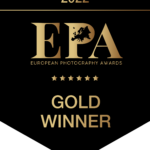
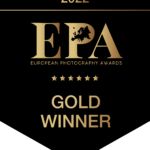
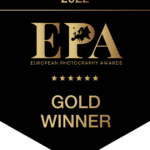
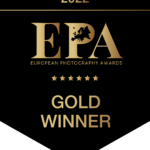







Date
Concept January 2017
April, 2022 – ongoing

